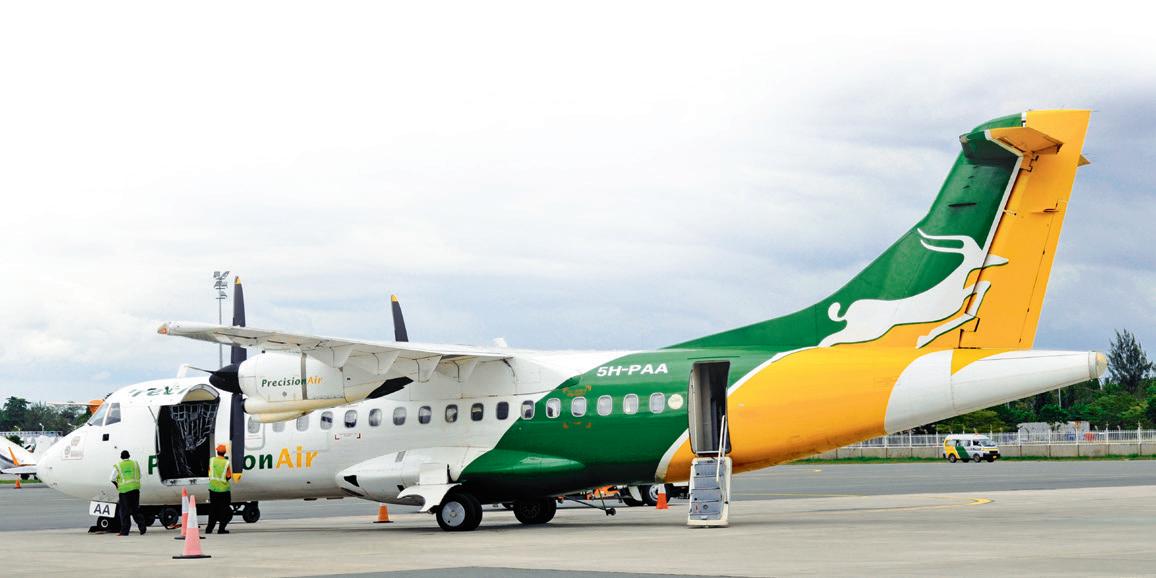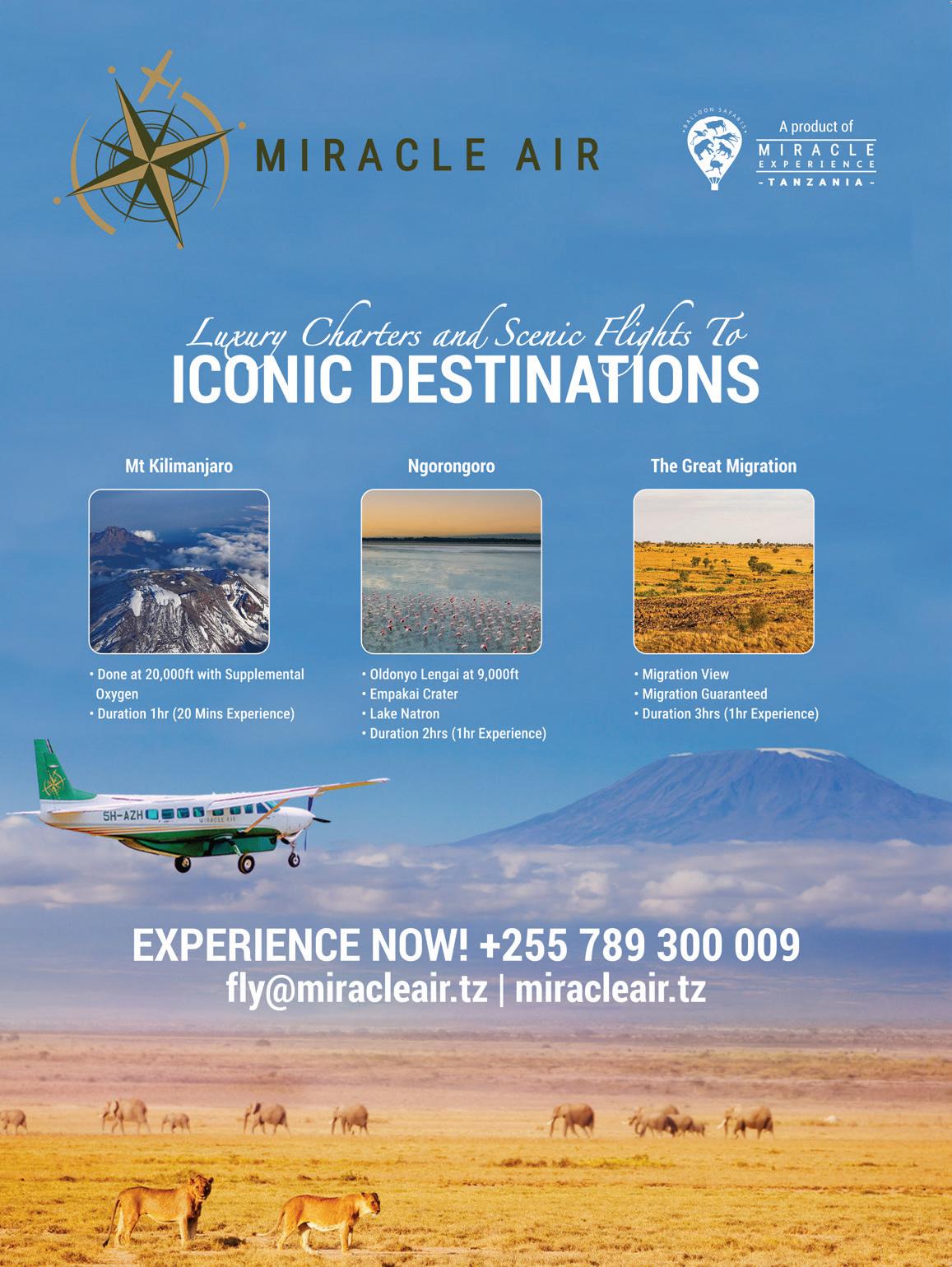Magical Mwanza
USAMBARA MOUNTAINS
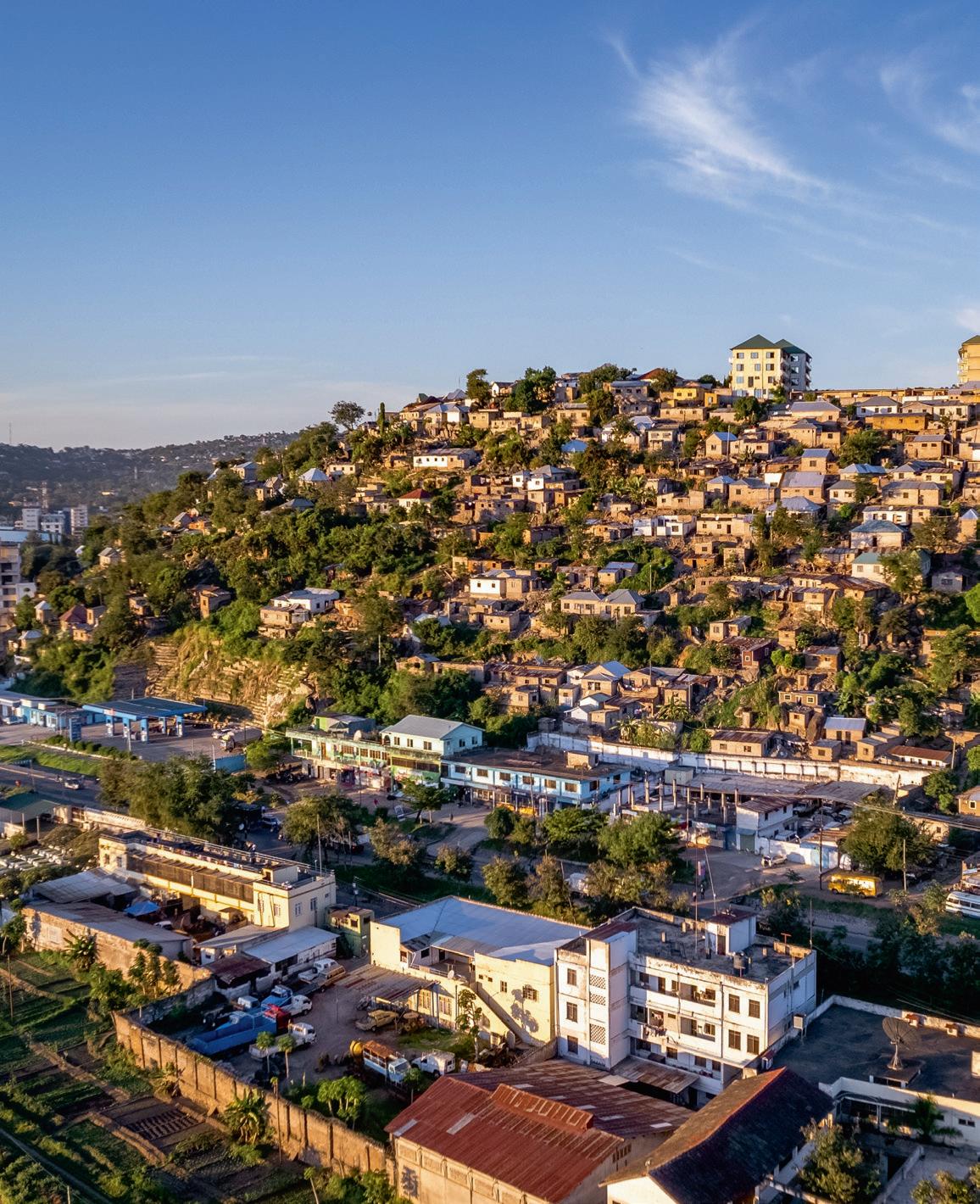
THE DANCING COWBOY Saddle up for a guide to Kenya’s country music scene


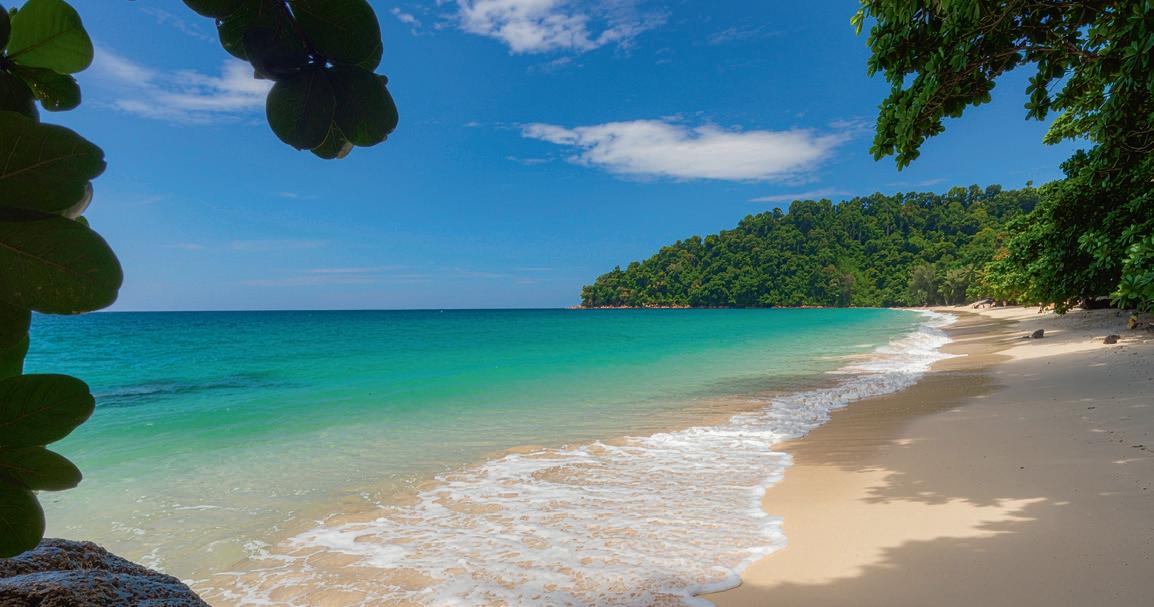


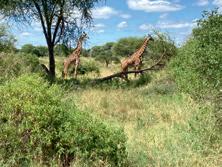
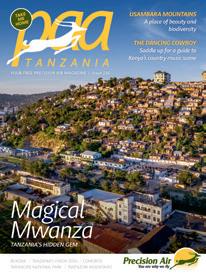
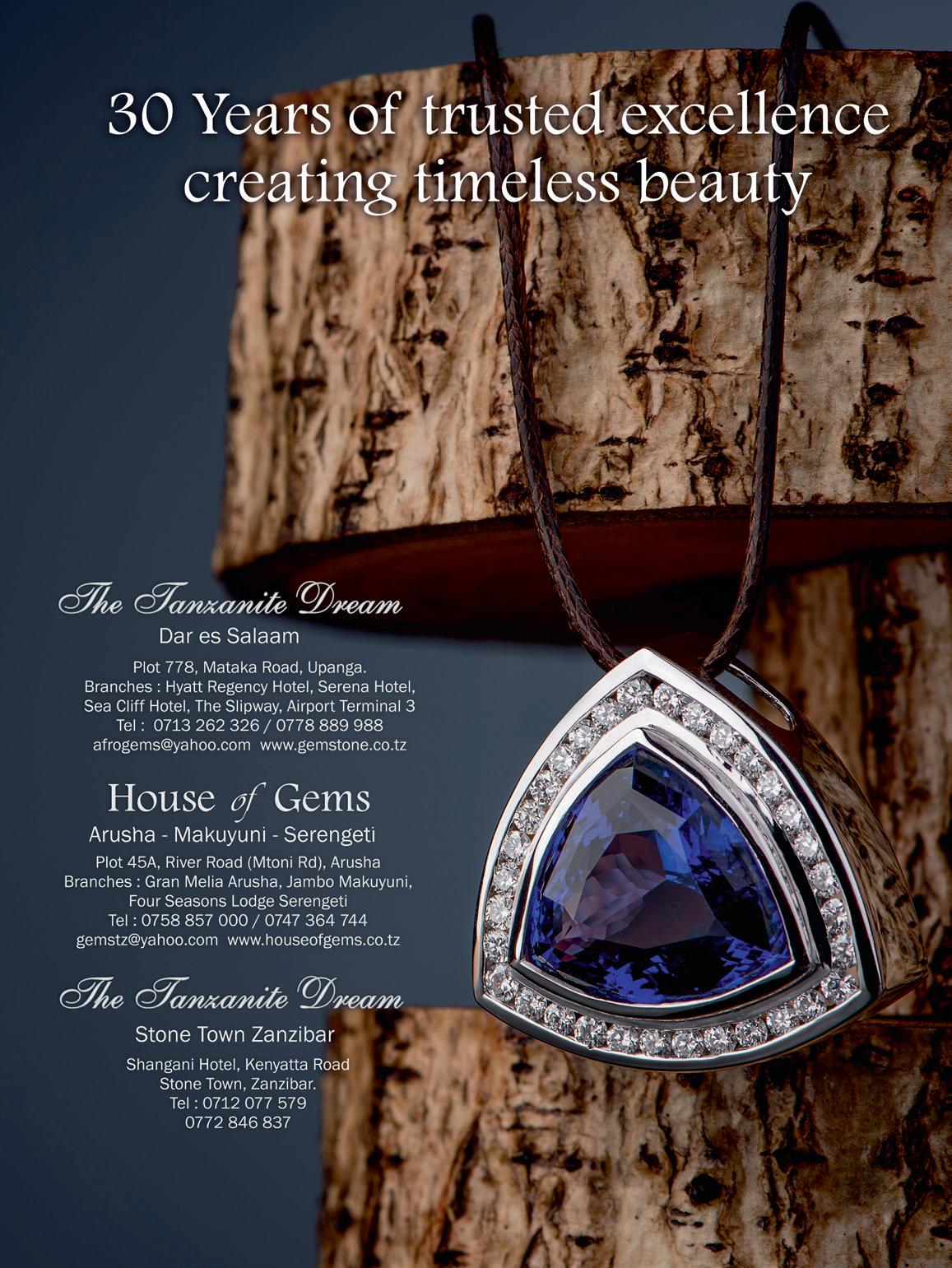


THE DANCING COWBOY Saddle up for a guide to Kenya’s country music scene








The holiday season is approaching. Traditionally it is a time for families to get together, strengthen bonds and create lasting memories. It is a privilege that Precision Air gets the opportunity to play a significant role in making that happen.
Tanzania has significant diaspora communities around the world with many of our most talented and ambitious young people experiencing life in new countries as they further their education or working career. Still, there is no place like home and especially during the holiday season the pull of family ties is stronger than ever. At Precision Air we are hard at work to reunite loved ones for this holiday season. In the air, on the ground, beneath the wing, or behind computer screens, we are dedicated to your holiday travel.
We have strengthened our fleet in anticipation of the holiday season with the addition of new ATR42-600aircraft and leased ATR72-500. With the addition of two aircraft it provide us with the necessary capacity and enhanced comfort to serve our growing network within Tanzania and Comoros. Precision Air is a major player giving wings to Tanzania’s soaring tourism sector.
Let me end by wishing all our cherished customers happy holidays. Thank you for your support and it is our pleasure to serve you as you celebrate these special times.
Patrick Mwanri Managing Director and CEO Precision Air Services Plc

Precision Air Services Plc
Diamond Plaza
PO Box 70770, Dar es Salaam, Tanzania
Tel: +255 (0)22 219 1000 Fax: +255 (0)22 286 0725 www.precisionairtz.com
Marketing and Corporate Communications Manager: Hillary Mremi Email: hmremi@precisionairtz.com
Paa Tanzania Magazine is published by: Land & Marine Publications (Tanzania) Ltd 5th floor, Josam House Plot Number 16, Mikocheni Area Along Coca-Cola Road, Dar es Salaam Tel: +255 686 118 816 www.landmarine.com
ADVERTISING: Godfrey S. Urassa Tel: +255 (0)686 118 816 (WhatsApp) Email: godfreyurassa@landmarine.com
General enquiries
Email: paa-tz@landmarine.org
EDITOR: Mark Edwards
Email: markedwards@landmarine.com
Head office:
Land & Marine Publications Ltd
6 The Square, Ipswich, Suffolk, IP5 3SL UK Tel: +44 (0)1206 752902
Email: publishing@landmarine.com www.landmarine.org
The contents and opinions expressed in this publication are not necessarily those of the editor, or any other organisation associated with this publication. While every care is taken to ensure accuracy in preparing the magazine, the Publisher and Precision Air assume no responsibility or liability for any inaccuracies or omissions. All submitted material is accepted on the understanding that the material can be edited, amended or abridged for publication. ©2025 Land & Marine Publications (Tanzania) Ltd.
Request your e-version subscription by emailing: subscribe@landmarine.org
www.precisionairtz.com
Facebook: @Precisionair Tanzania
Instagram: @Precisionairtz
LinkedIn: Precision Air Tanzania
X: @PrecisionAirTZ
TikTok: @_precisionairtz
YouTube: @PrecisionAirOfficial
Passengers can now connect to movies, games and more through their mobile phones and laptops.
Precision Air passengers now have wireless access to premium entertainment content during their flights. From September 22, we rolled out the Wireless In-Flight Entertainment (W-IFE) system across our fleet, becoming the first airline in Tanzania to introduce the groundbreaking technology.

W-IFE will significantly enhance the passenger experience across its fleet by allowing travellers to stream a large library of premium entertainment directly to their smartphones, tablets, and laptops. Content includes the latest Hollywood and African movies, documentaries, music, games, popular magazines, and comedy specials—all
without the need for a physical screen or downloaded content beforehand. For maximum enjoyment, customers are encouraged to bring their personal headphones.
Precision Air Managing Director and CEO Patrick Mwanri said: “Precision Air has always been a leader in innovation within the regional airline industry. The launch of W-IFE is clear evidence of our unwavering commitment to investing in technology that elevates the customer experience.
“Unlike fixed systems, W-IFE empowers each passenger to control their own entertainment journey on the device they are most comfortable with. The content is regularly updated to ensure afresh and engaging selection on every flight.”
Precision Air has added two aircraft to its fleet to meet growing passenger demand in the run-up to the festive holiday season.
In August we secured the lease of an ATR 72-500. The 70-seater twin-engine turboprop is ideal for regional operations due to its range capabilities and ability to access smaller airports. The acquisition represents a significant step in Precision Air’s strategy to deliver reliable and
efficient services across its domestic and regional network.
We have also returned an upgraded ATR 42-600 to service. Operational enhancements on the twin-engine turboprop include reduced engine noise and better seating. The reactivated aircraft brings the latest design elements for an improved passenger experience and increased operational capabilities.
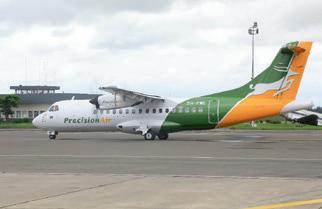
The additions to the Precision fleet will help us meet growing passenger demand with record numbers of tourists visiting Tanzania and domestic travellers gearing up to visit loved ones over the festive period.
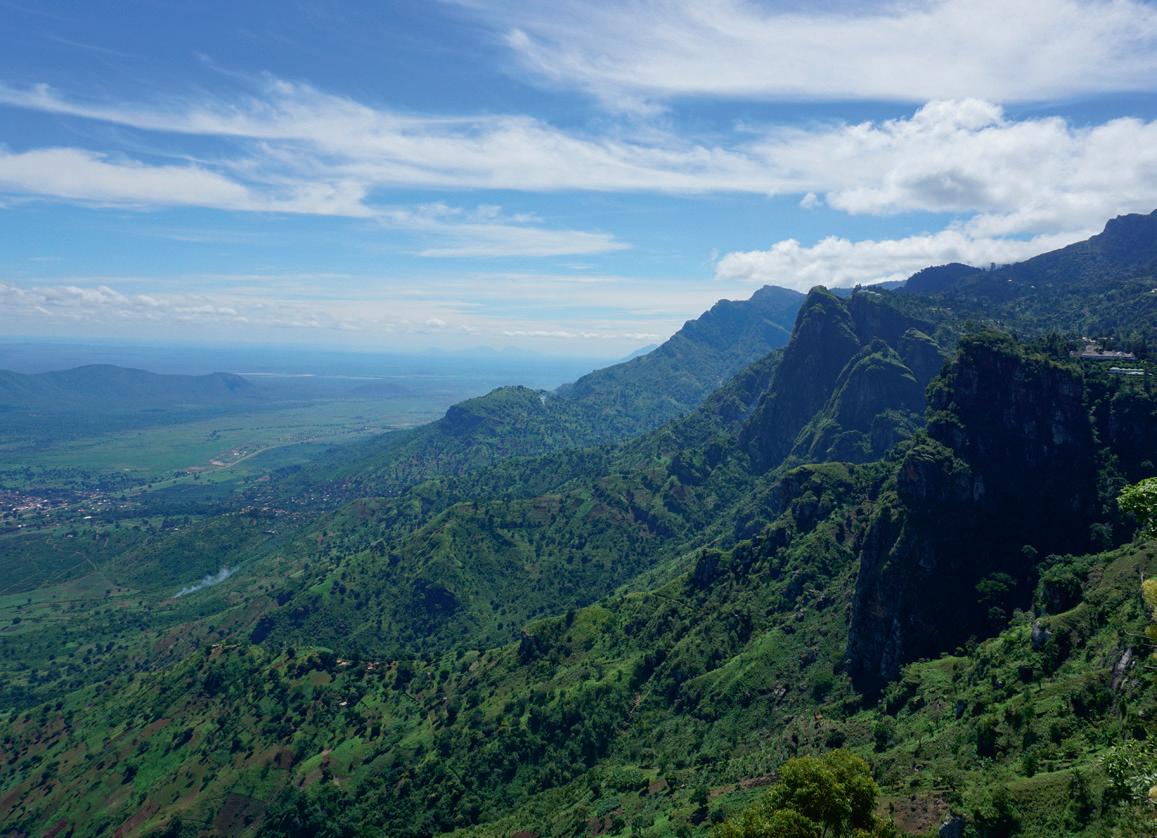
Nestled in northeastern Tanzania, the Usambara Mountains are a hidden gem of lush landscapes rich in biodiversity. Here are ten reasons to start packing your bags.
The Usambara Mountains are known as the ‘Galapagos of Africa’ due to their high level of plants and animals found nowhere else on Earth. The endemic wildlife includes the Usambara three-horned chameleon and Usambara eagle-owl while the rare and much-prized African Violet grows wild here under the forest cover.
The isolated ‘cloud forests’ of Usambara have fostered a ‘living museum’ of plant diversity. Among the most recent of the 3,500 plant species recorded here is the rare white orchid
Rhipidoglossum pareense. As well as more endemic orchids Usambara supports plentiful bird life, and numerous mammal, amphibian, and reptile species, making it a critical biodiversity hotspot.
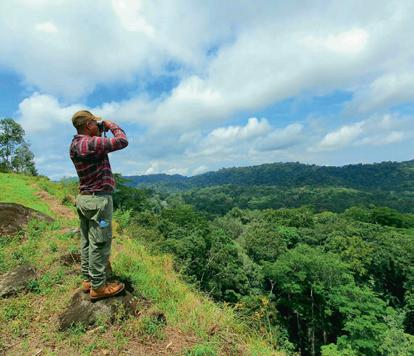
Birdwatchers will be delighted by the diverse avian population in the Usambara Mountains. With over 350 species of birds, including some that are endemic to the area, it’s a birdwatcher’s dream come true.
The Usambara Mountains boast numerous hiking trails that cater to all levels of fitness and experience. Popular routes include the Irente Viewpoint Trail for panoramic views, the Magamba Rainforest Trail for primate and waterfall sightings, and multi-day treks between villages like Lushoto and Mambo.

For those who love to explore on two wheels, the Usambara Mountains offer thrilling cycling trips. Multi-day tours and rides through the region’s valleys and towns provide an exhilarating way to experience the natural beauty of the region.
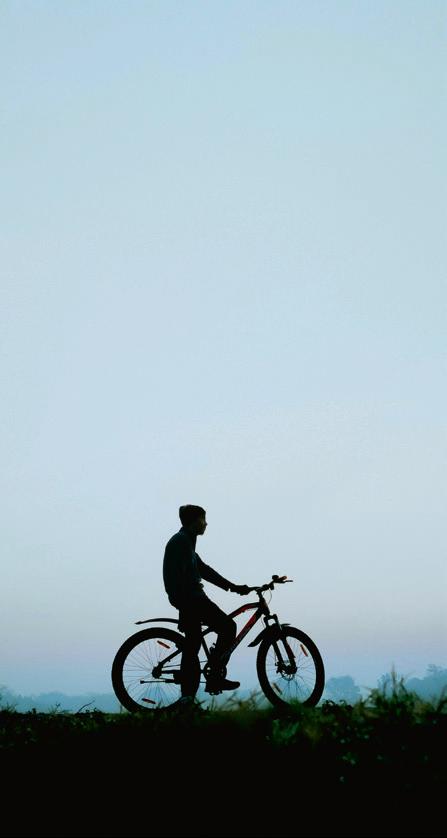
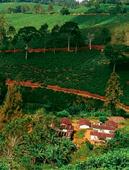
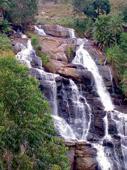

The charming town of Lushoto serves as the gateway to the Usambara Mountains. With its colonial architecture, bustling markets, and friendly locals, Lushoto is a delightful place to explore and immerse yourself in the local culture.
The Usambara Mountains are dotted with beautiful waterfalls. Soni Falls and Kisasa Waterfalls are both located near Lushoto while Soni Falls is a popular hiking destination with a campsite nearby.
Usambara’s altitude, regular rain and fertile soil combine to produce some of Tanzania’s finest Arabica coffee. Visitors can experience the
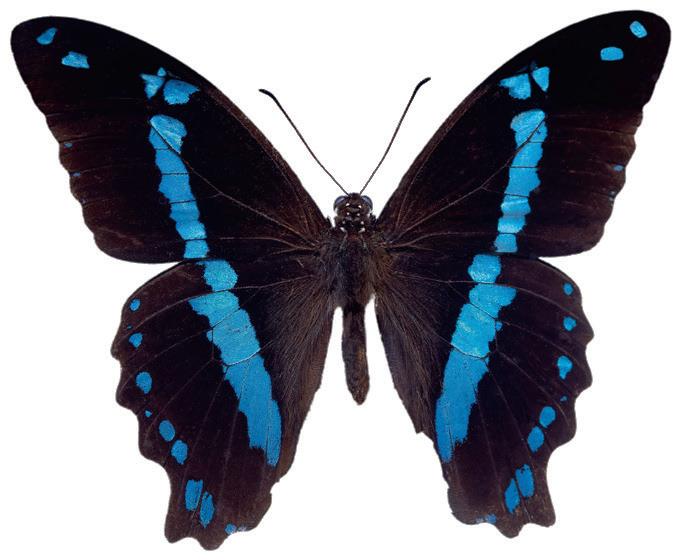
coffee-making process and taste freshly brewed coffee on local farming tours in the region.
The vistas of the Usambara Mountains are always special, but they hit different when experienced at sunset. The Irente Viewpoint, located a few kilometres from the centre of Lushoto, is the premier location for spectacular sunsets. You can enjoy the stunning scenery from this elevated point, which offers panoramic views of the surrounding landscape as the sun goes down.

The Usambara Mountains in Tanzania boast exceptional butterfly diversity, with over 300 species, including endemic ones like the Usambara Emperor and the Orange Mountain Blue. The Amani Butterfly promotes forest conservation and reduces poverty through sustainable butterfly farming of these native species. Visitors can learn about the life cycle of butterflies, witness the delicate creatures up close, and even participate in conservation efforts.
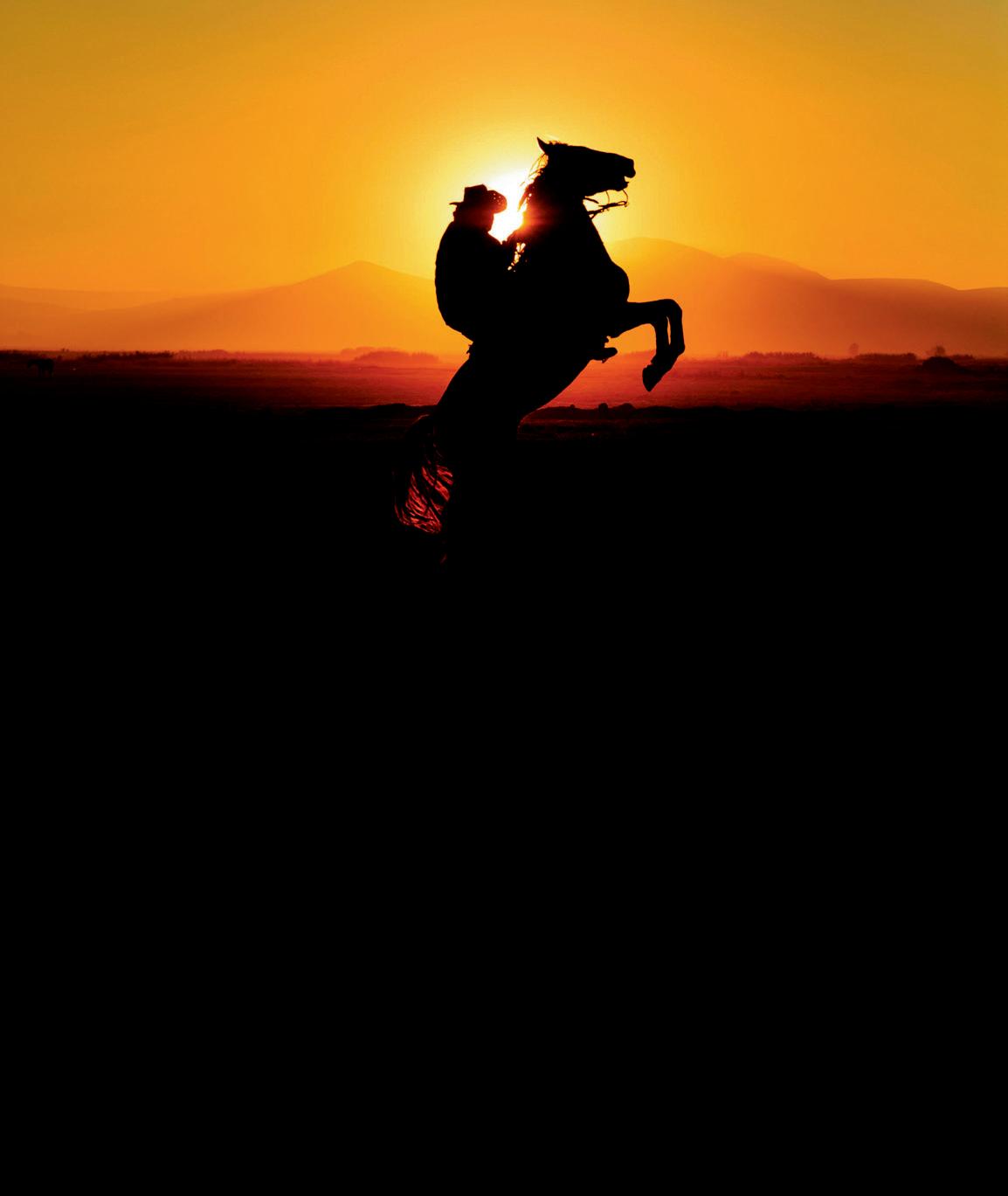
The annual International Cowboy and Cowgirl Day is held not in Nashville, but Nairobi. Country music and its associated fashions is growing in popularity in Kenya. John Knight – best known as ‘Sheriff Knight the Dancing Cowboy’ – is a popular figure on the scene with his silky moves leading line dance nights across the country. He talks to Paa about how country music connects to Kenya’s farming heritage and how it has been his inspiration since childhood.

Q: Just how big is country music in Kenya?
It is rising at a high rate. Country music in Kenya is far from niche. It is a well-established and culturally adopted genre, particularly prominent in Nairobi and rural communities. With star figures like Sir Elvis, thriving local artists, dedicated radio shows, and packed events, Kenya may host the largest country music scene in Africa. And while some see it as ‘old school’, many younger fans are rediscovering and reshaping it into a Kenyan expression of storytelling and community.
Q: When did you start getting interested in country music?
I got my first Stetson as a gift from my late father. He was the one who inspired my love country music. I can remember how he used share how the song lyrics shared stories and real-life experiences. It began my 15-year love affair with country music.
Q: What is it about country music and the cowboy style that appeals to you?
There is no culture without identity. My cowboy style identifies with my love for the country music genre.
Q: Is Nairobi the centre of Kenya’s cowboy/country music scene?
Yes, simply because a big city like Nairobi is home to so many different people with different interests so it’s quite easy to foster innovation and new experiences.
Q: Is the look just as important as the music? Where do you get your cowboy clothes?
In country culture, the look is

almost as important as the music because it sets the whole vibe. When people see boots, hats, denim, and boleros, they instantly know they’re stepping into a western-themed experience, even before the first song plays.
Q: Who are your favourite country music artists?
For home-grown talent is has to be Sir Elvis. Among American artists I like George Strait, Alan Jackson, Don Williams, Tanya Tucker, Johnny Cash, and not forgetting
now if you ask me, I would tell you can tell you the ‘Possum’ George Jones, but next week maybe it will be Waylon Jennings.
Q: Were you always a good dancer?
Yes, funny thing some moves just come automatically and dancing is something that I’m addicted to.
Q: What do you like about line dancing?
The social aspect is huge, but it’s also about unity, the shared

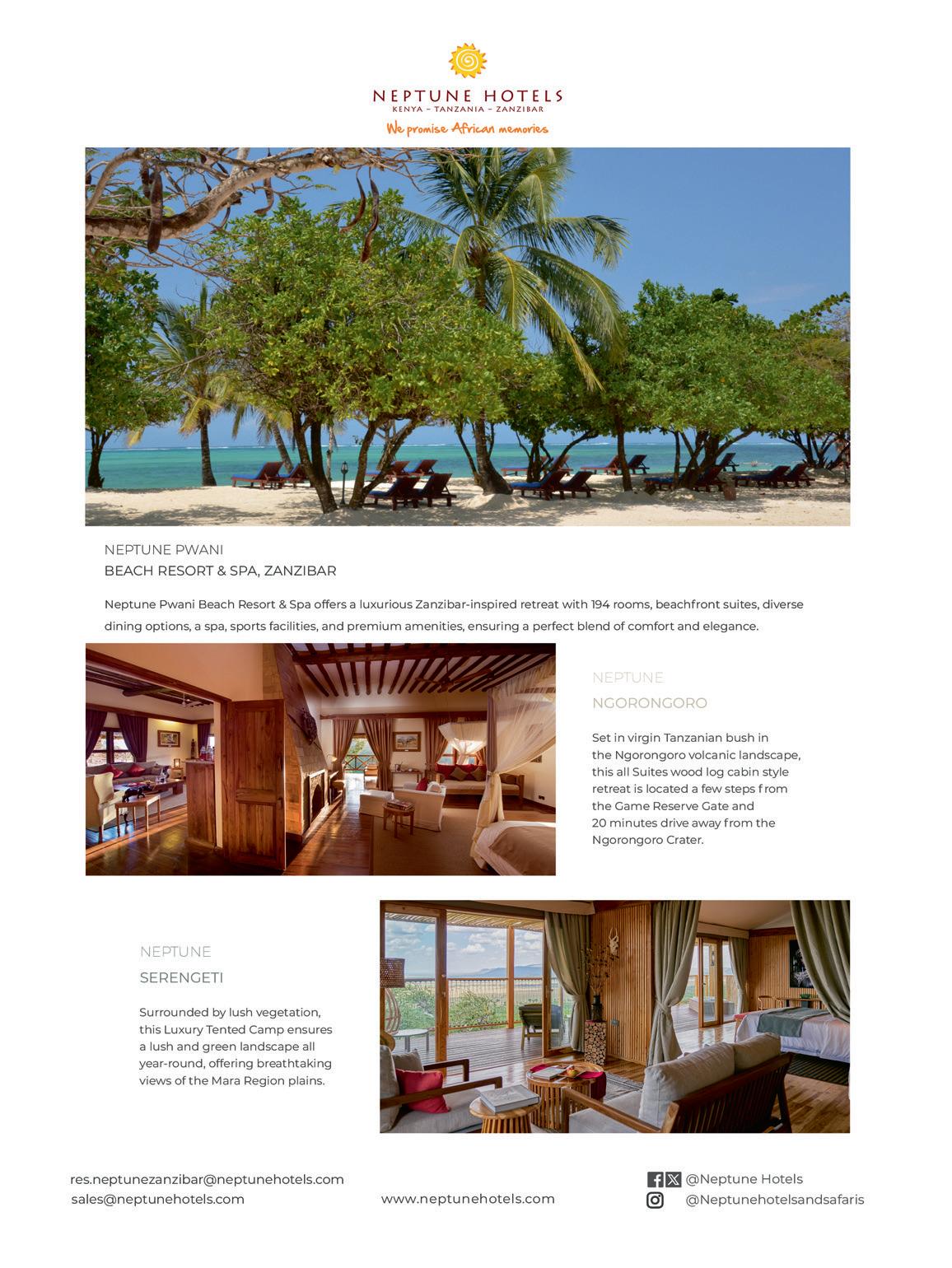

Just holla at me through my social media pages @sheriff_knight on Instagram and dancingcowboy on tiktok and finally enroll @Kenya country dance club.
Q: International Cowboy Day was celebrated in July this year at the Ngomng Racecourse in Nairobi. What are your memories of the day?
It was a Saturday full of foot-stomping line dances, heartfelt songs, family smiles, and African cowboy pride. This fusion of cultures celebrated not just music, but shared values in storytelling, faith, and community. Given the buzz, planning, and passion behind it, International Cowboy and Cowgirl Day has strong potential to become a beloved annual event in Nairobi and perhaps across the region.
Q: Sir Elvis also performed at the event? As leading lights in Kenya’s country music scene, how well do you know each other?
I have known Sir Elvis for the past 15yrs and I can tell you he’s been an inspiration to me and many other country music lover., He has been a mentor of sorts and we have travelled together to may events, including this year’s 4th of July event at the US Embassy in Nairobi where I led the dancing. He is the reason I am who I am today. Hats off to the king of country music in Kenya, Sir Elvis.
Q: What is the first line dancing step you usually teach beginners?
The two step dance. It is simple and rhythmic and helps novices get the feel of the music.
There is no culture without identity. My cowboy style identifies with my love for the country music genre

Q: Kenya has cowboys, does it also have cowgirls? Are there lots of women on the country music scene as well?
Yes, of course, Actually there are more cowgirls than cowboys.
Q: How does Sheriff Knight make a living from dancing and country music in Kenya?
Marketing and branding, influencing, hyping, selling merchandise, and finally dance training. It’s a good life.

With a rich Swahili heritage, fragrant spice farms, and surrounding coral reefs supporting diverse marine life, Comoros is like Zanzibar without the crowds of visitors. Follow Precision Air to this hidden gem of the Indian Ocean.
The Comoros islands are part of East Africa’s Swahili coast with Comorians speaking Shikomori, a local language closely related to Kiswahili. This shared cosmopolitan culture stems from the islands’ part in the Indian Ocean trading network that was the centre of world trade from the 13th to the 15th centuries. Arab merchants brought Comoros its name – they called the islands Juzur al Qamar ‘Islands of the Moon’ – the Islamic faith, and great wealth.
Unfortunately, this economic heyday is long past – Comoros is now one of the world’s poorest nations – but crumbling architectural reminders can still be found in the islands’ port towns. Exploring
them provides visitors with a fascinating window into the past. Highlights include Mutsamudu on Anjouan with its 14th century medina of winding alleyways, the lava stone Palace of Ujumbé, and a hilltop citadel complete with ramparts. On Grande Comore, Itsandra has a medina featuring a

multitude of mosques and homes dating back as far as the 13th century. Itsandra was one of the island’s two sultanates, along with Moroni – now the capital of the Comoros. The old town of Moroni is a maze of alleyways and tightly packed homes while its harbour is dominated by the town’s oldest mosque, the Ancienne Mosquee du Vendredi, which, as its name suggests, still hosts Friday prayers.
The Comoros islands were formed by volcanic activity tens of millions of years ago. These ancient eruptions have created a dramatic landscape. Black volcanic lava rock lines the coast providing spectacular contrast to the white sand beaches while mountainous terrain dominates inland. The highest peak on Comoros is active volcano Mount Karthala. Guided hikes can be arranged to its 2,361metre-high peak. You’ll need
to begin the strenuous ascent in the early hours if you want to be back before nightfall, but there are treks that include a night’s wild camping at the summit and allow for a gentler hiking pace. The route to the top passes Singani, a village in the foothills that was partially destroyed by Karthala’s eruption in 1977. Incredibly, the village has been reconstructed with locals using the solidified lava as building materials.
Mass tourism is yet to hit the Comoros so intrepid travellers have a playground of pristine natural wonders to explore. Visitors to the palm-fringed Mitsamiouli beach on the north-western coast of Grande Comore will often create the day’s first footprints in its flawless sands while hikers that walk the rim of the coastal volcanic crater that houses Lac Salé are rewarded with awe-inspiring views of the lake’s turquoise waters and out over the Indian Ocean.
Precision Air flies into the main islands of Grande Comore and Anjouan, but from there visitors can make use of local boat trips to reach the archipelago’s third island of Moheli. The only national park in Comoros protects the island’s marine, coastal and inland areas. The biodiverse sanctuary is home to one of the worlds largest green turtle nesting populations, is the only place in the world to find the critically endangered Moheli Scops Owl and welcomes migratory whale sharks and humpback whales to its waters from mid-July to late October. An eco lodge with its own diving centre provides accommodation on the island. By visiting, you can support
conservation efforts and enjoy ecofriendly activities that help preserve the natural beauty of the islands.
The protected coral reefs around Moheli offer the archipelago’s best diving. The Unesco Biosphere Reserve is known for its marine diversity with opportunities to see manta rays, tuna, grey sharks and dolphins. All sightings are helped by the crystal-clear waters with visibility up to 40 metres in places
As you’d expect from a nation that is covered in spice farms, ringed by the seafood bounty of the Indian Ocean and has a significant history of French rule, the Comoros has a mouth-watering food scene. Comorian cuisine features a delightful mix of spices, fresh seafood, and tropical fruits. Don’t miss out on trying local dishes like langouste à la vanille (lobster with vanilla) and mataba (cassava leaves cooked in coconut milk).
The Comorian people are known for their friendliness and hospitality. Many locals have modest means, but they extend a genuine warmth and welcome to visitors. Visiting a local market such as the bustling ‘Volo-Volo’ in Moroni, learning about traditional crafts or taking a cooking class are all excellent ways to join in the Comoros way of life.
The tropical climate of Comoros means it is warm enough for swimming all-year round, but it can get scorching. Many local women protect their skin from the sun’s rays by applying a paste
Mass tourism is yet to hit the Comoros so intrepid travellers have a playground of pristine natural wonders to explore.

of ground sandalwood and coral known as ‘msinzano’. The mask is often applied in decorative ways with abstract patterns and is seen as much as a beauty enhancer as a sunscreen.
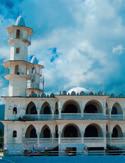
The Comoros may well have the best smelling mornings in the world. All-year-round ylang-ylang in farms across the archipelago is harvested from dawn to 9am when the flowers are at their most fragrant. They are then sent to the distillery for their oil that provides the floral notes in some of the biggest global perfumes. Comoros is the world’s leading producer of ylang-ylang essential oil, and it has become a key export and revenue source for the nation. The rise of co-operatives and community-run farms means many locals have access to a life-changing business model. To see the farming process close-up, book a place on a farm tour and help with the harvest. Your nose will thank you.
Precision Air offers direct and budget-friendly flights from Dar es Salaam to both Prince Said Ibrahim International Airport in Grande Comore and Ouanai Airport in Anjouan, making it easier than ever to reach this tropical paradise.
With Bukoba back in the Precision Air network, local tour company Kiroyera Tours is delighted to be welcoming new visitors to this lush lakeside oasis. Managing director Mary Kalikawe shares some of the attractions on offer.
Nestled on the western shores of Lake Victoria, Bukoba is a gateway to lush landscapes, ancient heritage, and vibrant local culture. Whether seeking adventure, relaxation, or a profound cultural connection, Bukoba and its surroundings promise a journey unlike any other.
Lakeside escapes and island adventures
A day in Bukoba delivers a trio of lakeside gems:
Kiroyera Teemba: This iconic heritage hill, right in Bukoba town, is carved with ancient caves and crowned by a summit offering panoramic views over the city, Lake Victoria, and its islands. The on-site museum preserves the region’s stories, while dining here pampers guests with both culinary delights and a refreshing breeze.
Kabuhara Beach: Just a short ride away, Kabuhara features soft,

salt-like white sands and gentle waves—perfect for swimming and relaxing.
Musila Island: Only a half-hour boat ride, picturesque Musila Island offers serene views, birdwatching, and the tranquil escape every traveller craves.
Together, these destinations showcase Bukoba’s striking scenery and cultural depth.
Nature lovers find paradise in the Kamachumu Escarpment, 60 km from town, where hiking trails wind through stone pillars, lead past Bugonzi Waterfall, and climb mysterious caves. The nearby Mushonge Museum exemplifies classic Haya architecture. Gera village welcomes visitors with authentic local cuisine, paired with song and dance for a spirited cultural experience.
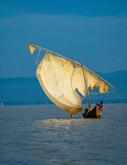
Closer to town, Rubale Forest’s Kyamunene Waterfall is a lush ecological park just 8 km from Bukoba, an oasis for trail running, hiking, and solitude.
Ancient Heritage: Zamadamu Katuruka and Bwanjai Rock Paintings
Bukoba’s ancient sites offer stunning glimpses into Africa’s early civilizations.
Zamadamu Katuruka: Located in Maruku, a short drive from Bukoba, this site features remnants of iron smelting dating back to 500 BC
Bukoba’s roots stretch back to 1890, when German officer Emin Pasha established a fort (Boma) to defend East Africa

– the oldest scientifically recorded metallurgical site in Africa.
Bwanjai Ancient Rock Paintings: Bwanjai’s dramatic cave paintings capture symbolic history, artistry, and beliefs of past generations, deepening any cultural visit to the region.
Bukoba’s roots stretch back to 1890, when German officer Emin Pasha established a fort (Boma) to defend East Africa. Relics from colonial times, World War One graves, and striking architecture are explored via guided town tours. These include the lakeshore, Nyamkazi fishing village, markets, spice farms, and – just beyond –Kanazi Palace. This royal residence fuses Bahaya and German architecture; on some days, visitors meet the King for firsthand stories.
Bukoba is a showcase for agriculture and farm-to-table cuisine. Coffee tours take two to three hours; tea, vanilla, macadamia, and avocado plantations provide insight into Kagera’s green economy.
School and orphanage visits offer chances to connect with local families and give back.
There are four national parks within reach of Bukoba with the Kagera region home to some of Tanzania’s newest reserves.
Burigi Chato National Park: The third largest national park in Tanzania is home to rare antelope like the Cape Eland, Sitatunga, Sable, and Roan.
Ibanda-Kyerwa National Park: Surrounded by Rwanda’s border, this destination blends dramatic landscapes and diverse wildlife.
Rumanyika-Karagwe National Park: Rich in history and biodiversity, perfect for explorers who crave undiscovered terrain.
Rubondo Island National Park: Only three hours from Bukoba, this sanctuary is famed for its chimpanzees, birds, and serene lakeshore.
The temperate climate is one of Bukoba’s best-kept secrets. While December brings heat to Tanzania’s coastal regions, Bukoba is cool, lush, and green – the perfect Christmas escape, far from the swelter of Dar es Salaam and Zanzibar. Throughout the year, visitors enjoy pleasant evenings, gentle breezes, and spectacular

greenery. June to October is ideal for dry weather adventures
The people of Bukoba are incredibly friendly and welcoming, making every guest feel at home. Hospitality is a cornerstone of the local lifestyle and an enduring memory for travellers.
Bukoba offers lakeside grilled tilapia, home-style meals with Mama Kisha in Gera village, and vibrant market flavours. For accommodations, locally owned hotels, guesthouses, and heritage lodges ensure a comfortable stay.
Kiroyera Tours is the region’s leader for guided adventures, safaris, corporate events, and custom itineraries. Their passionate team ensures excursions are safe, authentic, and memorable – whether hiking, birding, or relaxing. Bukoba is a launch site to major attractions of the East Africa region
Trek to the gorillas of Uganda as well as Serengeti and Tanzania’s Northern Parks with Kiroyera Tours.
Mobile: +255713 526 649 / 759 424 933
Email: mary@kiroyeratours.com, Web: www.kiroyeratours.com

Image by Calvin Kulaya
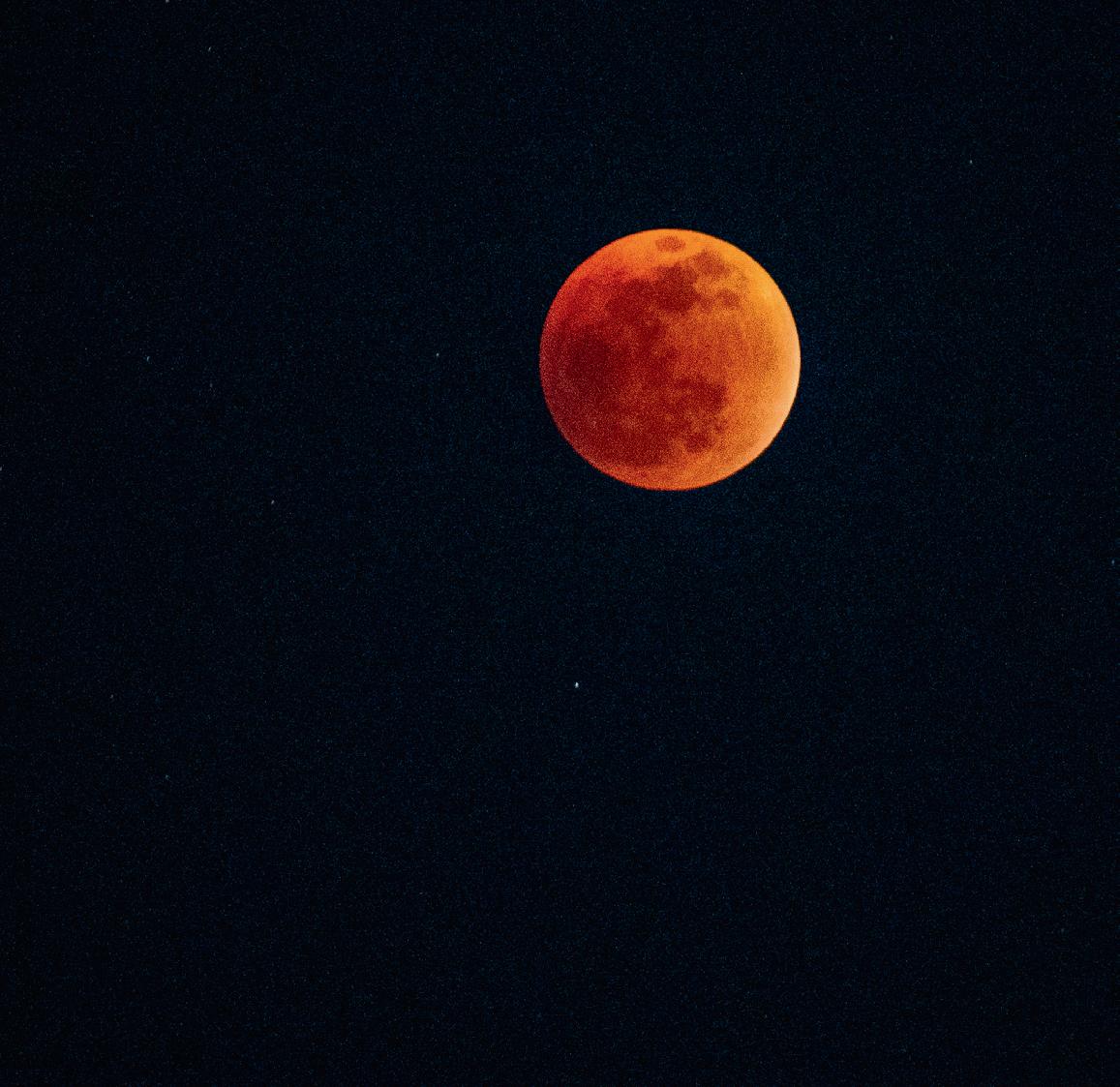
On the evening of September 25, 2025, a total lunar eclipse was visible in the skies over Tanzania. The country had excellent views of the rare astronomical event, also called a ‘blood moon’, in which the Moon is completely engulfed by Earth's shadow, causing it to turn a deep red.
Sky-watchers in East Africa, the Middle East, and most of Asia were able to able to get a good view of the moon’s transformation with ideal evening timing and clear skies.
Among those to savour this rare spectacle – Tanzania will have to wait until October 2032 for the
next one – was local photographer Calvin Kulaya. He set up his equipment in Dodoma and took some amazing shots that he has been kind enough to share with Paa Tanzania.
For more examples of Calvin’s amazing work, head to his Instagram page @_calvin.k

Podcasts are becoming a significant force in popular culture in Africa, appealing to a tech-savvy audience hungry for content that reflects their daily realities, humour, and aspirations. Harriet James selects five of the best podcasts to get your fix of tech, true crime, pop culture, or comedy.


The Kenyan podcast space is expanding at an impressive pace, driven by young, urban, and tech-savvy audiences hungry for content that reflects their daily realities, humour, and aspirations. With rising internet penetration, affordable smartphones, and a growing culture of on-demand entertainment, podcasts are filling gaps left by traditional media. From comedy and travel to relationships, technology, and music, Kenyan podcasters are building communities that not only entertain but also inform and inspire.
These shows create communities, amplify voices often missing from mainstream platforms, giving space to youth, women, and creatives who want to speak freely.
THE SANDWICH
Few shows capture the spirit of Kenya’s digital youth like The Sandwich Podcast. Known for its mix of humour, storytelling, and bold commentary on everyday life, the podcast has become one of the most
listened-to shows among millennials and Gen Z. Hosted by Owen Njuguna, Tony ‘Tonio’ Kibet, Joan Melly and George Nyamita, the show thrives on unscripted banter that mirrors the funny, sometimes outrageous conversations you’d hear in matatus or at house parties.
With over 1.5 million listeners on Spotify, The Sandwich appeals to young listeners because it provides a space to laugh at the absurdities of life in Kenya, from dating mishaps to internet trends. For many, this is not just entertainment but a validation that their lived experiences are worth talking about, and worth laughing at.
Another wildly popular Kenyan series that delivers a potent mix of humour, candid conversation, and cultural commentary. Additionally, it ranks as one of the most-streamed podcasts in Kenya on Spotify.
Hosted by Chaxy, Mariah, and Mwass, the podcast has built a highly engaged and loyal community, as seen during their 24-hour live stream celebrating 100,000 YouTube subscribers.
Kenya’s top-streamed podcast explores the many facets of love from the first meet cute to loss, heartbreak, and the journey toward self-discovery. Hosted by Julia Gaitho, each episode features guests sharing deeply personal stories, sometimes anonymously, about relationships that shaped who they are today.
This podcast hosted by Adelle Onyango is more than just celebrity storytelling. It has built its own community by offering unfiltered conversations about resilience, identity, and life transitions. Adelle’s storytelling resonates deeply with women and young professionals who see themselves in her guests’ struggles and triumphs. The show’s impact lies in how it humanizes public figures, showing their vulnerabilities and journeys beyond the spotlight.

ManTalk KE is aimed at ‘men who love honest conversations about masculinity, personal growth and navigating modern relationships’. Hosts Eli Mwenda and Oscar D. Koome have created one of Kenya’s most influential lifestyle podcasts by carving out a rare and refreshing space for men to speak openly and honestly. Unlike many platforms that reinforce stereotypes, the podcast focuses on emotional vulnerability, personal growth, and social responsibility which makes it both relatable and transformative for a wide audience. With more than 150,000 listeners spread across Kenya, South Africa, the UK, and the US, the show consistently ranks among the top 10 most streamed podcasts in Kenya.
This podcast has become Kenya’s premier source for tech news, startup insights and industry updates. Hosted by tech journalist Nixon Kanali, the
show delivers weekly deep dives into Africa’s emerging technologies, featuring interviews with founders, investors, and innovators driving the continent’s digital transformation
Few podcasts dive deeper than Cleaning the Airwaves (CTA) by Richard Njau. Known for its marathon interviews, which sometimes last for hours, the show chronicles the journeys of Kenyan musicians, producers, and industry insiders. From pioneers of the 1990s to rising stars of today, CTA is an oral history of Kenya’s music scene. While it’s a chance for the diehard fans to learn the backstories behind hit songs, for the wider public, it’s cultural preservation and a way of honouring Kenyan music and ensuring its stories are not lost.
Better known as The Messy Inbetween, this trailblazing podcast is hosted by the dynamic duo of Murugi Munyi and Lydia K.M. The show has built its reputation on being unapologetically honest and refreshingly unfiltered. Each episode dives deep into the realities of modern life, covering everything from the complexities of dating and friendships to the pressures of career growth, financial independence, and social expectations. What sets it apart is its raw, candid style that refuses to sugarcoat the struggles many young women face, while still offering humour, warmth, and encouragement. With over 50,000 monthly listeners and a thriving digital community of more than 100,000 Instagram followers, TMI has grown beyond just a podcast into a lifestyle brand that empowers its audience to embrace authenticity, vulnerability, and self-discovery.
In a powerful open letter, Zanzibarbased investment advisor Samiha Ali calls on women to help turn Tanzania’s Vision 2050 into reality.
Dear Sister, the future is calling, If you and I were sitting together right now, I’d tell you this: Tanzania’s Vision 2050 is no just a government plan. It’s your life, your dreams, your future. By 2050, our country wants to be a place where every Tanzanian, whether born in a city or a small village, can live with dignity, opportunity, and pride. That means prosperity that includes everyone, growth that protects the environment, and an economy that can hold its own on the world stage. But here’s the truth – this vision will only become real if people like you decide to be part of it.
Imagine a Tanzania where you don’t have to fight for a seat at the table because the table was built with you in mind. Equal pay, leadership roles, education that reaches every

girl, and opportunities that don’t depend on where you were born or who you know. This is about more than income; it’s about dignity and freedom of choice.
Your part? Lift as you climb. Mentor a younger girl. Share your skills with your community. Support women-led businesses and stand for policies that protect equality. Change doesn’t happen by accident. It’s built through deliberate actions, big and small.
We’re talking about clean energy powering our homes, thriving coral reefs, healthy soil for our farmers, and forests that stand tall for generations to come. This isn’t just “green talk” it’s about survival, beauty, and responsibility. It’s about leaving behind a Tanzania that’s as rich in resources as it is in opportunities.
Your part? Make everyday choices that protect our land and water. Use resources wisely.

Reduce waste. Speak up for the environment in your community. Turn green ideas into business opportunities – whether it’s solar energy projects, eco-tourism ventures, or sustainable farming.
Picture Tanzania as a tech hub, a tourism hotspot, and a home to industries exporting proudly to the


world. Picture products labelled “Made in Tanzania” in stores from London to New York. This is where innovation meets opportunity. Your part? Learn skills that will matter in the future – digital literacy, renewable energy systems, modern agriculture, creative industries. Be curious about the world beyond our borders, and carry Tanzania’s creativity, resilience, and brilliance with you wherever you go.

Sister, women are the heartbeat of this vision. When we are educated, resourced, and respected, entire communities rise. Vision 2050 recognises this, but it needs us to step forward, not wait for someone to invite us in.
And you already have what it takes:
You know how to stretch a small budget into something meaningful.
You’re already a problem-solver,

whether that’s managing a household, running a business, or juggling school and work.
You carry the resilience of generations of women before you who refused to give up, no matter how heavy the load.
When women step into leadership, things change. Schools improve. Communities thrive. Economies grow. And the truth is, if we’re going to achieve the future we dream of, we can’t afford to leave half our population out of the equation.
Don’t wait for 2050 to get involved. Change is not something that happens “one day” it starts with what you do next.
Learn: Understand the details of Vision 2050. Find where your passions and skills fit in.
Stay curious and keep learning.
Join: Be part of youth networks, women’s groups, and professional communities. Work with others who share your goals.
Speak: Whether it’s at home, in a meeting, or on social media, use your voice. Stand up for fairness
One day, maybe on another flight decades from now, you’ll look out of the window and see the Tanzania we dreamed about. Cities that hum with clean energy. Villages in which opportunity is everywhere. Oceans thriving. Women and men working side by side to build something extraordinary.
and progress.
Create: Start something, even if it’s small – a business, a project, a campaign. Every idea matters if it moves us forward.
Small acts create big waves. Mentoring a young girl can spark the next great leader.
Choosing a sustainable product over a harmful one can protect our environment. Speaking up can inspire someone else to do the same.
The barriers are real but so are the solutions.
I won’t pretend it’s all easy. There will be challenges: access to capital, social barriers, outdated mindsets, and the slow pace of change. But the path to 2050 isn’t about waiting for everything to be perfect before we start it’s about working through the imperfections to make progress anyway.
We will need strong networks of women supporting women. We will need allies in leadership that believe in equal opportunity. We will need persistence when the first “no” comes and the second, and the third.
But we’ve done hard things before. We can do this too.
And you’ll know – you helped build it.
The pen is in your hand now. The story is yours to write. The future is calling you by name.
With determination and hope, a sister who believes in you.
Mwanza is an experience: wildlife adventures on your doorsteps and the country’s most beautiful sunsets. Ziada Abeid is won over on her first visit to Tanzania’s second city.
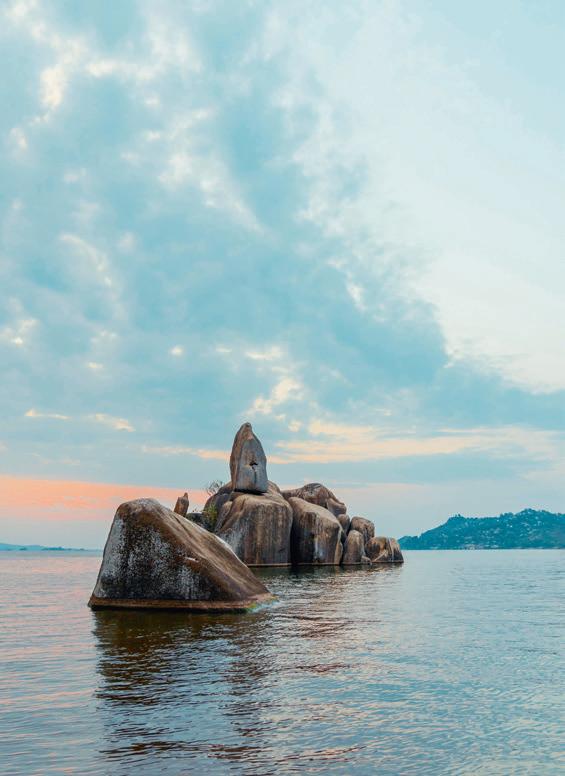

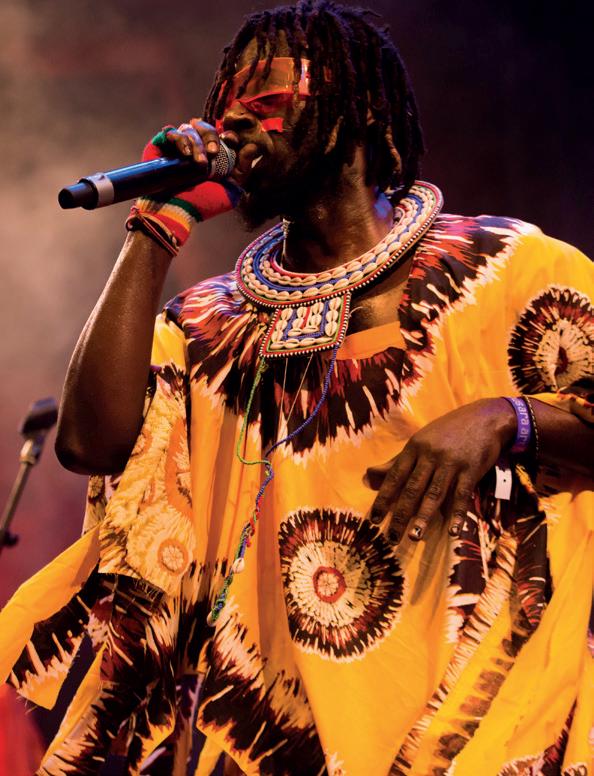
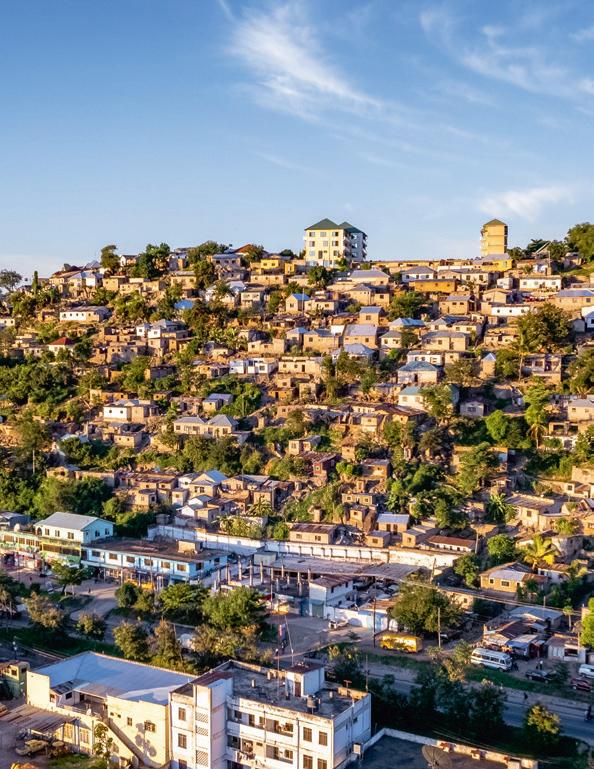
With its green landscapes, dramatic rocky outcrops, and stunning views of Lake Victoria, Mwanza is a feast for the eyes. I arrived ready to explore and left with a camera full of photos and moments I’ll never forget. The sunsets alone were worth the trip. As days draw to a close here, rich, golden colours spill across the horizon and are mirrored in the still waters. Here’s how Mwanza worked its magic on me, and how it might work for you.
If you only have a day, Saanane National Park offers an easy escape into nature without straying far from the city. For something more adventurous, Rubondo Island National Park gives you hiking trails, lake views, and a good dose of wildlife.
Not into big safari parks?
Mwanza has alternatives. I spent my afternoon strolling around Wag Hill Zoo (located within the lakeside Wag Hill Lodge and Spa), feeding the zebras. Kassa Zoo is another easy option if you want to get up close to local wildlife in a relaxed, family-friendly environment.
Here’s the secret: Mwanza is just 140 km from the Ndabaka Gate, the western entrance to Serengeti National Park. Which means, yes, you can base yourself in the city and still tick ‘Serengeti’ off your list in a single day. Wildlife, vast landscapes, and then back in time for a lakeside dinner.
I’ve seen many sunsets in Tanzania, but Mwanza’s? The most stunning sunset I’ve ever witnessed. The best way to experience them is on a Lake Victoria cruise. Cruising along the serene waters of Lake Victoria as the sky turns fiery orange, and the famous Bismarck Rock standing tall in silhouette is the kind of moment you’ll want to bottle up and keep forever.
Feel the beat at night when the sun dips below the horizon, Mwanza comes alive with energy and rhythm. From Thursday into the weekend, you’ll find local bands performing at bars and clubs. Rock City Mall is a nightlife hub, housing numerous pubs and lounges where you can relax, enjoy a drink, and take in some authentic local entertainment. Notable spots like The Cask and Malaika Hotel are also must-visit destinations for any night owl.
A visit to Mwanza isn’t complete without tasting famed local fish dish ‘sato’ (tilapia freshly caught from Lake Victoria). Restaurants serve it in different styles - grilled, fried, or cooked in traditional sauces that will have your taste buds dancing. For a high-end dining experience, The Cask is a top choice, while Kijiji Bar and Grill offers a more casual yet equally delightful meal in the heart of the city.
Mwanza is an ideal destination for budget travellers and families alike. The city offers numerous budget-friendly hotels, such as
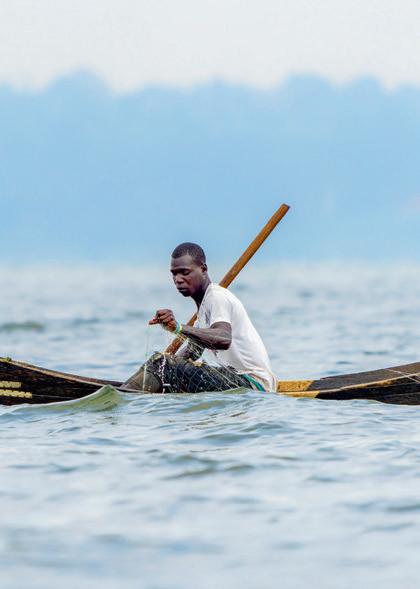
A visit to Mwanza isn’t complete without tasting famed local fish dish ‘sato’
is a palm-lined paradise
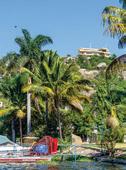
the Leyshof Hotel and The Pigeon Hotel, both located in the city centre. For those seeking a more luxurious stay, family resorts like Wag Hill and Malaika, situated on the outskirts of the city, provide all-inclusive packages and are perfect for group retreats. Mwanza surprised me with its beauty, energy, and warmth. It’s more than just a stopover; it’s a destination that deserves your time. If you’re planning a holiday in Tanzania, consider adding Mwanza to your itinerary for a quick stop and let this lakeside city work its quiet magic on you.
The protected coral reefs of nature reserve Misali Island offer some of the best diving and snorkelling in the Zanzibar archipelago.
There’s plenty more attractions inland with rare wildlife, sacred caves and historic pirate hideouts. Just an hour’s boat ride from Pemba’s west coast, here’s why Misali Island is a day trip to die for.
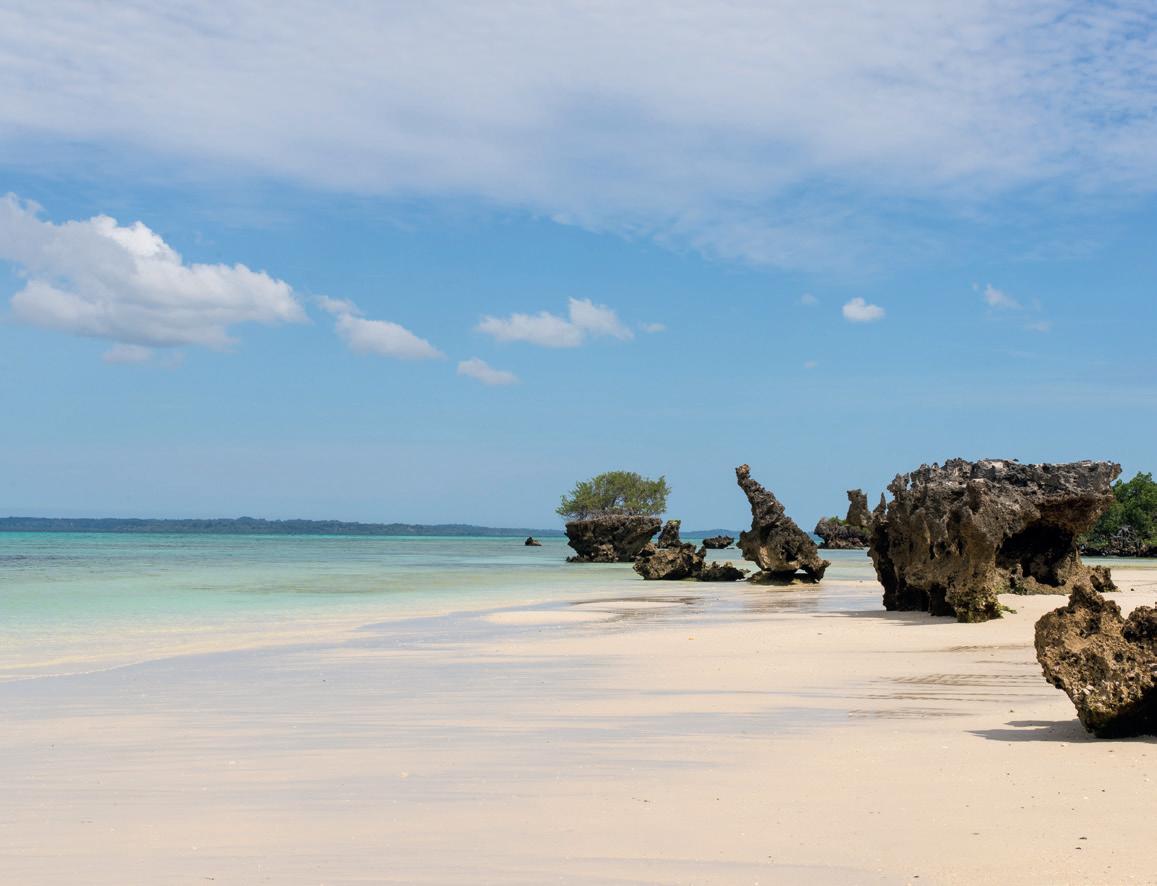
The Misali Island Marine Conservation Area was set up in the 1990s to restore and protect the island’s rich marine and terrestrial diversity. The success of the 22-sq-km protected area – which is supported by the local community – along with the island’s remoteness has contributed to a pristine coral reef supporting diverse marine life. Misali’s vibrant reef ecosystem also benefits from its unique position within the Pemba Channel, where deep oceanic currents meet shallower reefs. Today, it is home to over 350 species of fish, 40 types of coral, and even
the occasional visit from dolphins, turtles, and whale sharks.
The island’s coral gardens begin just metres from the shore, making it ideal for snorkellers, who will love the calm waters and clear visibility. Flippers and masks are available for hire on Mbuyuni Beach, on the north-east of the island, where most visiting boats drop anchor. There are more dramatic drop-offs in the reef further out from shore to attract experienced divers. Perhaps one of the best features of this underwater paradise is how few people know about it – for now. This makes for an exclusive snorkelling experience. Even if the

main beach is crowded, you can wander the island trails until you discover a secluded spot to swim.
The 1 sq km Misali Island is also a haven for wildlife inland with its lush forest home to Pemba vervet monkey (how they got to the island seems to be a bit of a mystery), Pemba white-eye (a, small, warbler-like bird with bright yellow feathers), and Pemba sunbird. There is also a population of gigantic coconut crabs – you won’t find an arthropod bigger –that burrow in the sandy soil in the island’s coastal thickets and climb palms trees to crack open coconut
shells with their powerful claws. The island’s beaches are also important nesting sites for green turtles and hawksbill turtles. The nature trail that winds through the forest will lead you to the island’s western coast and Mpapaini beach, which is a turtle favourite.
Misali Island is crucial to the fishing industry that Pemba depends on for food security and livelihoods for the local community. Misali is located in the Pemba Channel – a stretch of deep water between the island and mainland Tanzania that is a productive fishing area – and many fishermen set up temporary camps here as a base for extended fishing trips. Wander the island and you’re sure to meet these friendly fishermen. While the waters around here are known for their abundant fish populations, fishermen have been taught to not drop their nets in the non-extraction zone of the conservation area. Most of the fishermen have embraced the conservation goals of the island and have embraced ecotourism as another revenue stream. They know the island very well so prove informative guides if visitors want a tour of Misali.
One of the most effective ways of bringing the local fishermen around to adopting more sustainable practices has proved to be through their faith. The vast majority of Pemba’s population, fishermen included, identify as Muslim. Misali Island has strong ties to Islam. Local legend tells of a saintly man called Prophet Hadhara who visited the island
and, upon finding no prayer mat, declared the island itself to be one, as its northern beach faces Mecca. The name ‘Misali’ is derived from the Swahili word for prayer mat.
The fact that Misali is considered a sacred place by Muslims has translated to a strong sense of respect and protection for the natural environment. Islamic teachings being used to promote sustainable fishing practices
You may want to do some beachcombing during your time on Misali. Legend has it that the notorious pirate Captain Kidd used the island as a hideout and that he buried treasure here. During the late 17th and early 18th centuries Misali was part of the ‘Pirate Round’, a sailing route used by buccaneers in the Indian Ocean. The island’s location and surrounding coral reefs made it a safe haven for pirates to store their booty.
Adding to the mystique of the island are its inland caves that are believed by many Pembans to hold

Vervet monkeys can be found in the island’s forest
the spirits of ancestors. Bendera Cave – a short walk from the visitor centre on Mbuyuni Beach – is considered a sacred place where rituals are carried out by locals. The larger Mpapaini Caves, with their unique rock formations, on the west side of the island are also a popular attraction.
Mangrove forests in Misali’s sheltered coastal areas play a vital role in the island’s ecosystem, acting as fish nurseries, protecting coastlines from erosion, and providing habitats for birds and other wildlife. There is a mangrove replanting initiative led by local women’s groups on Misali.
As Misali Island is a nature reserve within its own conservation area, there is an entry fee (US$ 10 for each visitor). Many boat tours include the fee within their price, but it is worth checking before you board. The fee is used to support conservation programmes on the island such as daily ranger patrols and enforcing bans on destructive fishing practices.
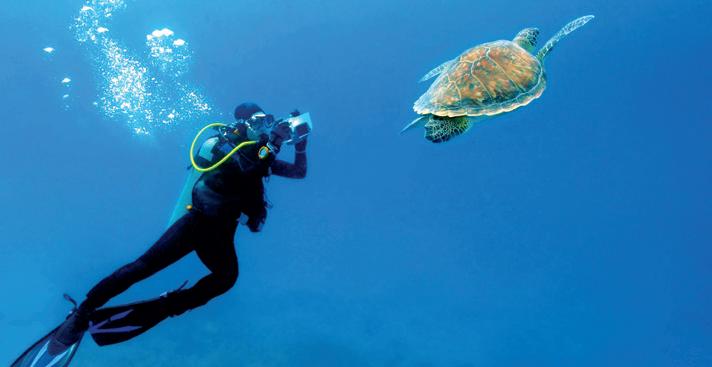
Boat trips go from the beach at Mkoani near the ferry port. Wesha, in the Chaka Chaka district, is another popular launch point. Journeys from both locations take around an hour to reach Misali Island.
Thousands of African elephants can’t be wrong. Mark Edwards finds out why Tarangire National Park is the place to be in the dry season.
The Serengeti is not the only Tanzanian national park famous for its migration. In the dry season Tarangire National Park attracts massive animal congregations drawn by the perennial water sources provided by the Tarangire River and the Silale Swamp. Visitors include huge herds of elephant, buffalo, zebra and wildebeest that attract predators such as lions and leopards to the waterholes as well.
To experience this exceptional concentration of wildlife I’ve signed up for a day safari in the park in early June – the month that heralds the beginning of the country’s long dry season that runs until mid-October. I’ve travelled here with the Arusha-based tour company All Day in Africa and we enter the park from the main north gate that receives the tourist-laden traffic that has taken the two-hour drive from the ‘Safari City’.
The gate car park is full of Land Cruisers like ours when we arrive while hordes of local schoolchildren spill out of coaches – it’s nice to see that they get opportunities to experience the abundant wildlife on their doorstep. Tarangire might not have the international cachet
of its neighbours in Tanzania’s northern safari circuit, the Serengeti and Ngorongoro, but its renown is growing. The crowds of tourists here are resplendent in pristine khaki safari wear. I, however, am dressed in a blue T-shirt and black jeans – a sartorial combination that my giggling guides inform me is a ‘bite me’ invitation to the park’s population of tsetse flies (luckily, all vehicles are sprayed with insecticide before entering the park to keep the bothersome bugs away – and it works).
The sheer density of wildlife in Tarangire at this time of year means
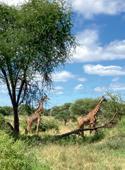
we experience some amazing sightings soon after we set off into the park. A roaming herd of elephant – just a fraction of the thousands that migrate here during the dry season – use their trunks to tug leaves from acacia trees while further on buffalo and wildebeest gather in the grasslands.
Baobab trees are an iconic part of Tarangire’s landscape and a popular nesting site for birds
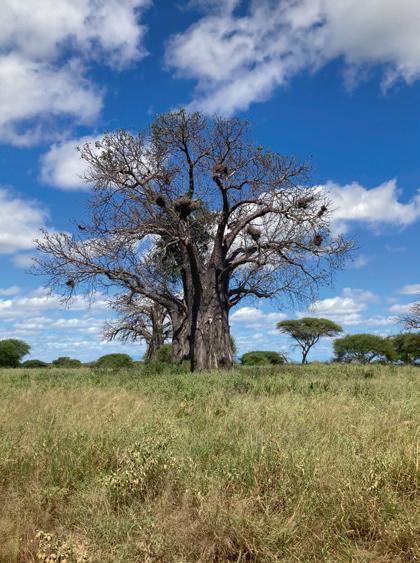
The popularity of the park with high season visitors does mean that many of the most dramatic wildlife scenes draw a human crowd. At one moment we are just one of two game vehicles to watch a lone lioness drag her zebra kill into the long elephant grass, but with drivers updating each other with the latest sightings over the radio we are soon joined by more than 10 4x4s filled with passengers with telephoto lenses at the ready. The congestion is such that one of the arriving vehicles gives our Land Cruiser’s wing mirror an accidental whack as it squeezes past.
It’s a system that ensures visitors don’t miss out on spectacular sightings, but it can detract from the intimacy of connecting with the raw, untamed forces of nature. Sensing my desire to explore away from the crowds, the All Day in Africa team set off for remoter
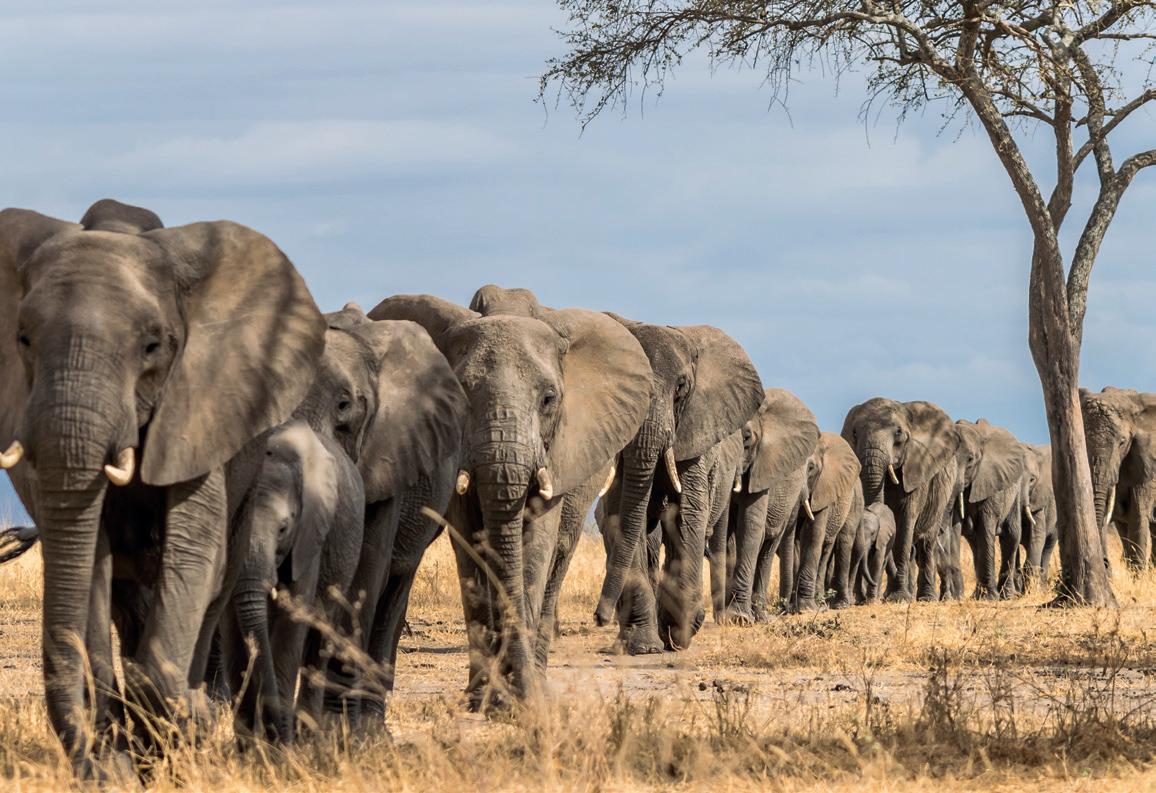
parts of the park. Tarangire has room to roam. At 2,850 sq km it is only Tanzania’s sixth largest national park, but it’s still bigger than Kenya’s Masai Mara. Exploring the wideopen plains of the north of the park, we see giant baobabs that have stood for centuries. Baobabs are one of the few tree species to thrive in Tarangire’s arid conditions and with their distended trunks and spare, twig-like branches they form striking silhouettes on the park’s skyline. The tree’s ability to store large quantities of water in its trunk means they are a lifeline for animals in the dry season here. We stop and marvel as a family of elephants use their tusks to strip the bark to get to the trunk’s fibrous, water-rich interior to quench their thirst.
The largest and oldest baobabs are hollow as their trunks are
A roaming herd of elephant use their trunks to tug leaves from acacia trees
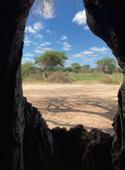
made of multiple fused stems that form a ring around the centre. This gives the ‘tree of life’ another vital use – as shelter. Hyraxes, bees, and squirrels set up home in baobabs while an especially massive specimen in Tarangire called the ‘poacher’s baobab hide’ was used to store illegally hunted meat until 1995 when park rangers discovered the hideout. Now it is a popular photo stop for tourists.
The baobabs also act as a resting and nesting place for Tarangire’s plentiful bird population. More than 550 species have been
recorded here, making the park one of Tanzania’s premier birding destinations. While the southern part of the park with its swamps and lush vegetation, particularly during the wet season, attracts numerous migratory and resident species, I was delighted by the bird life I saw in the north. Sightings included Tanzanian endemic the yellow-collared lovebird, lilac-breasted roller, yellow barbet and a tawny eagle perched next to its stick nest in the branches of a baobab.
Driving away from the crowds also provided some memorable animal sightings large and small. We stopped to gaze for a full five minutes at a young giraffe craning its neck to reach the most succulent leaves at the top of an acacia
tree. We see slender mongooses scurry around one of Tarangire’s many termite mounds – vital to the ecosystem here as the termites’ activity enriches the soil with nutrients and increases its water retention. Not that they get a lot of thanks for their environmental efforts from the mongoose, who gobble down the insects in their hundreds. I also saw my first black mamba – Tanzania’s most deadly snake – in the wild. We spot it on the road ahead and slow down to approach, but it snaps into life like a cracked whip and disappears into the vegetation.
My highlight is another first. I can now say I have seen a leopard in the wild. We spot a male draped bonelessly over the thick branch of a sausage tree. He is a vision of relaxation and one of the most beautiful creatures I have ever seen. Thank you, Tarangire.
There are more animal adventures to be had when we stop for lunch. The hilltop Matete picnic site looks down on a bend in the Tarangire River where the low water levels and muddy banks conspire to create a current of coffee-coloured swirls the envy of any latte artist barista.
The picnic tables are surrounded by acacia trees with branches that provide a vantage point for a troop of vervet monkeys to keep a keen eye on the packed lunches of tourists. Some try their luck. I am vaguely aware of a monkey sat a few metres back over my right shoulder. Suddenly there is a crash. I look down to see my plate of fruit
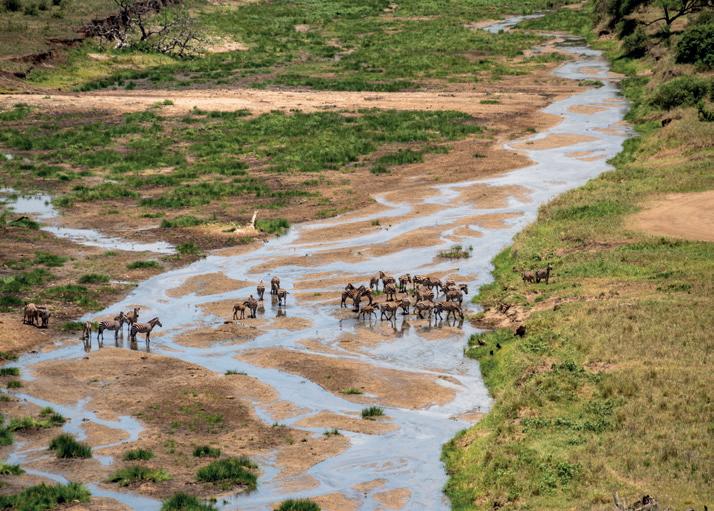
is now missing a banana. The culprit has scrambled back up the tree and is peeling the stolen fruit with a satisfied air. Fooled once, I remain vigilant to finish my lunch without further incident. Other picnickers are not so fortunate with one robbed of a pot of yoghurt. It has to be said the offending monkey deals with his haul very skilfully, peeling back the lid and gulping down the contents.
My time in Tarangire has been hugely enjoyable. Seeing the leopard meant I had ticked off four of the Big Five, which, in this rhino-less park, is a full house. When I come again, I will explore the southern region of the park

to escape the crowds and see the animals such as hippos, crocodiles and wild dogs.
If I get back here before the end of October, I will book a walking safari – the short vegetation in the dry season improves animal visibility and makes it safer for guides to lead guests – to get that personal wildlife experience. I also like the idea of a balloon safari, which have recently been introduced in the park, to get a new perspective on the park’s unique landscape and its wealth of wildlife. It’s clear I have only scratched the surface of Tarangire National Park with this trip. I look forward to digging deeper.
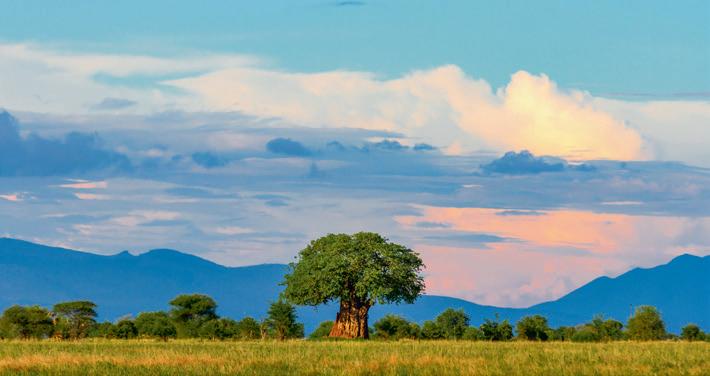
Mark travelled with All Day in Africa. The homegrown company offers trips to Tarangire National Park among its tailor-made experiences across Tanzania that include safaris, mountain climbing or beach holidays. For more details or to book, visit alldayinafrica.com

In recent years, the Lukiza Autism Foundation has emerged as a beacon of hope and change in Tanzania, transforming the landscape of autism care and awareness. Founded with the mission to support individuals with autism and their families, the foundation has made remarkable strides in breaking down stigmas, providing essential services, and advocating for the rights of those affected by autism.





By sharing stories of individuals with autism and their families, the foundation has humanised the condition and highlighted the unique strengths and abilities of those on the autism spectrum
One of the most significant challenges faced by individuals with autism in Tanzania is the pervasive stigma and misconceptions surrounding the condition. The Lukiza Autism Foundation has been at the forefront of efforts to educate the public and dispel myths about autism. Through community outreach programs, workshops, and media campaigns, the foundation has worked tirelessly to change perceptions and promote understanding.
The foundation’s efforts have been instrumental in shifting the narrative from one of fear and misunderstanding to one of acceptance and inclusion. By sharing stories of individuals with autism and their families, the foundation has humanised the condition and highlighted the unique strengths and abilities of those on the autism spectrum.
Access to quality care and support services is crucial for individuals with autism and their families.
The Lukiza Autism Foundation has established a range of programs and services designed to meet the diverse needs of the autism community in Tanzania. These include early intervention programs, educational support, and vocational training.
Early intervention is particularly important for children with autism, as it can significantly improve their developmental outcomes. The foundation’s early intervention programs provide specialised therapies and support to help children with autism reach their full potential. These programs are tailored to the individual needs of each child and are delivered by trained professionals who are dedicated to making a difference.

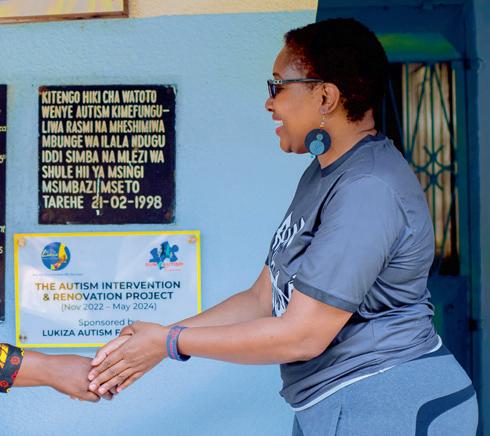


In addition to early intervention, the foundation offers educational support to help children with autism succeed in school. This includes providing resources and training for teachers, as well as advocating for inclusive education policies. The foundation also offers vocational training programs to help young adults with autism develop the skills they need to find meaningful employment and lead independent lives.
Advocacy is a key component of the Lukiza Autism Foundation’s work. The foundation is committed to advocating for the rights of individuals with autism and ensuring that they have access to the services and support they need. This includes working with government agencies, policymakers, and other stakeholders to promote policies that support the autism community.
The foundation has been successful in influencing policy changes that have improved the lives of individuals with autism in Tanzania. For example, their advocacy efforts have led to the inclusion of autism in the national disability policy, which has increased access to services and support for individuals with autism and their families.
The Lukiza Autism Foundation recognises the importance of building a supportive community for individuals with autism and their families. The foundation hosts regular support groups, social events, and recreational activities
that provide opportunities for individuals with autism to connect with others and build friendships. These activities also provide much-needed respite for families and caregivers, who often face significant challenges in caring for their loved ones with autism. By fostering a sense of community and belonging, the foundation helps to reduce isolation and improve the overall well-being of individuals with autism and their families.
As the Lukiza Autism Foundation continues to grow and expand its reach, it remains committed to its mission of changing the narrative on autism care and awareness in Tanzania. The foundation’s work has already had a profound impact on the lives of countless individuals and families, and there is no doubt that their efforts will continue to make a difference for years to come.
The foundation plans to expand its services, including upscaling its Ustawi Kwa Kila Mtoto programme. This includes opening new centres in underserved areas, increasing access to early intervention and educational support, and continuing to advocate for policies that support the autism community.
The Lukiza Autism Foundation has changed the narrative on autism care and awareness in Tanzania, and their work serves as a model for organisations around the world.
To make a donation to support the work of LuAF, visit https:// lukizaautismfoundation.org/ donations
Lilly Arajova, the Senior Presidential Advisor on Tourism in Uganda and former CEO of the Uganda Tourism Board, has written a memoir about climbing the Rwenzori Mountains, Africa’s highest mountain range. Here she talks to Harriet James about why she hopes ‘Mountains of the Moon’ will shine the spotlight on her country as a world-class climbing destination, and inspire more women to embrace life’s challenges.
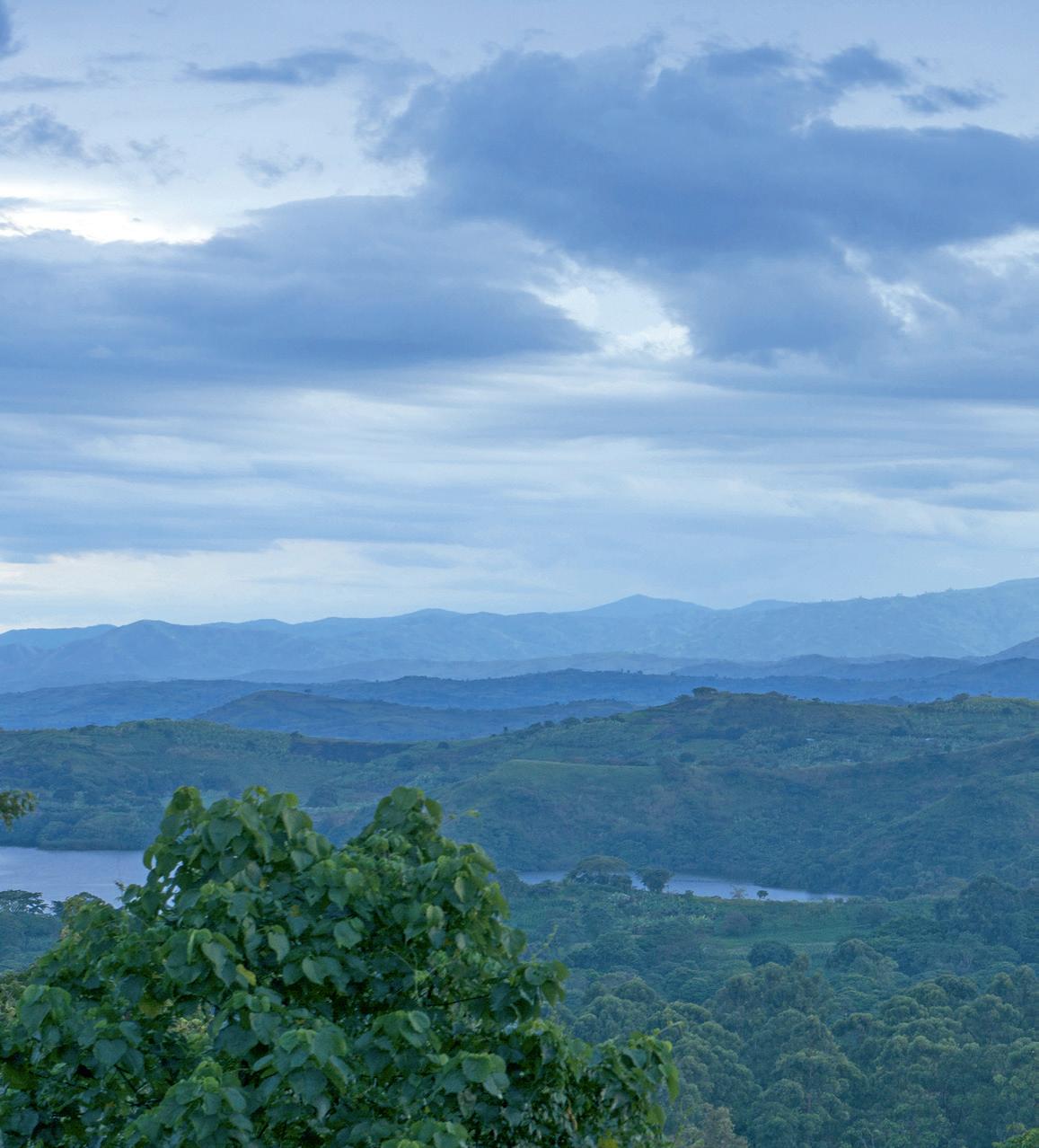
Q: How does it feel to be the first woman to publish a memoir about climbing the Rwenzoris?
It’s a deeply personal and quietly historic moment. On one hand, there’s pride in knowing that my footsteps on those rugged, cloud-kissed slopes are now part of the record not just for climbers but for women adventurers everywhere. On the other, there’s a humbling awareness that I carry the voices of many who came before me but were never heard, while opening a door for those who will come after. It feels as if the mountains themselves have handed me a medal that says: “You endured. You told it. And now it will never be forgotten.”
Q: What sparked the idea for this book?
The inspiration came from a desire to capture the raw beauty, challenges, and transformative power of the Rwenzori experience before it
faded into memory. Climbing those mountains was not just a physical journey, but a spiritual awakening that reshaped how I see nature, resilience, and myself. I wanted to share the untold perspective of a Ugandan woman on those slopes, celebrate our natural heritage, and invite readers to hear the mountains’ own ‘echoes’ lessons about courage, persistence, and interconnectedness. By publishing this memoir, I also hope to shine an international spotlight on Uganda as a world-class mountaineering destination.
Q: Were there any challenges in getting your memoir published? Publishing felt like climbing the Rwenzoris all over again. It was exciting, exhausting, and rewarding. I spent months writing and rewriting to balance authenticity for seasoned climbers with accessibility for newcomers. Finding a publisher who
understood that this was both a personal journey and a way to showcase Uganda’s adventure potential was a big step. The hardest part was carving out time amid a busy schedule, but like on the mountain trail, every challenge made the destination sweeter.
Q: Why is it important for Africans, especially in tourism, to tell their own stories?
It’s crucial because we understand the heart and context of our destinations in ways outsiders often can’t. When Africans tell their own stories, we present our landscapes, cultures, and people with authenticity not as stereotypes or through someone else’s lens. This shapes how the world sees us and influences how visitors experience our countries. Owning our narratives lets us highlight Africa’s richness and diversity while ensuring tourism benefits
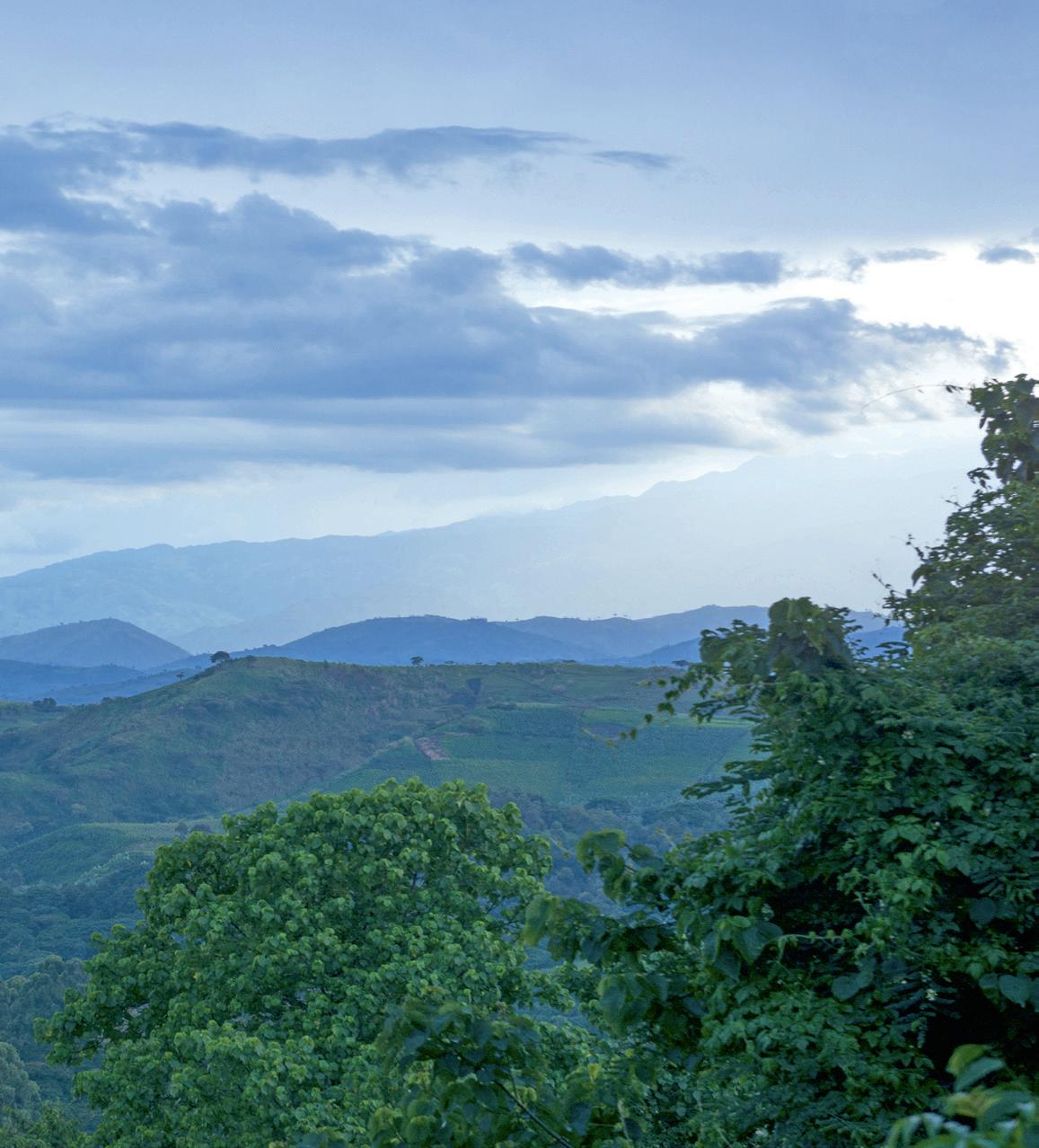
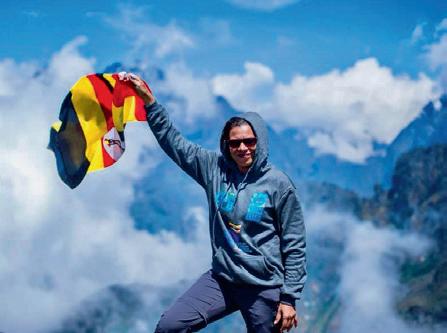
Too often, Africa’s adventure stories are told by outsiders, but this is from someone who calls this land home
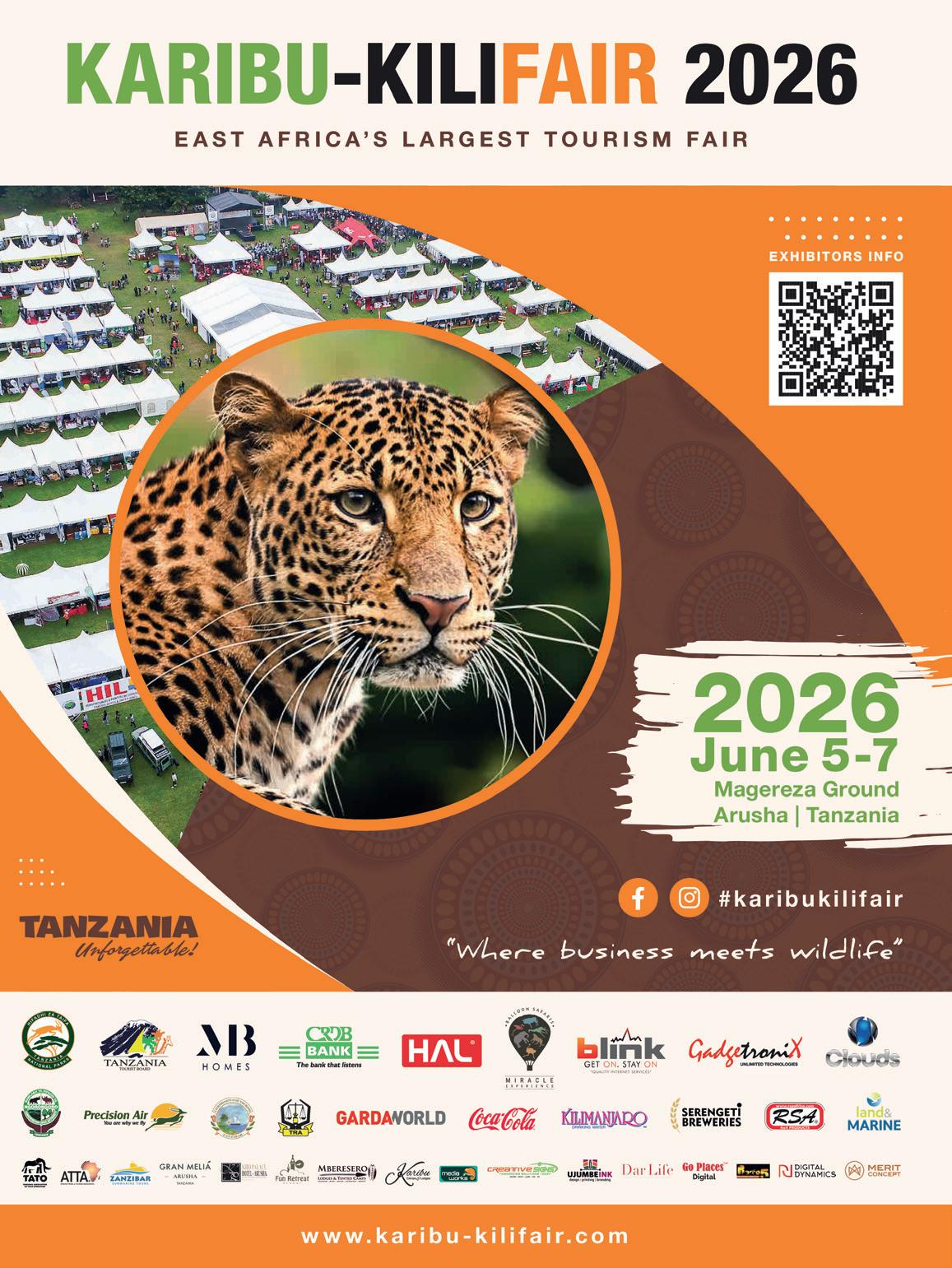
communities and preserves heritage for future generations.
Q: How do you think your memoir changes perceptions of Uganda and African adventure tourism?
Too often, Africa’s adventure stories are told by outsiders, but this is from someone who calls this land home. It highlights the skill, resilience, and passion African mountaineering demands while revealing the warmth and authenticity of our people and experiences. I want readers to see Uganda not just as a safari destination but as a worldclass adventure hub.
Q: What kind of training and mindset did you need before the climb?
Climbing the Rwenzoris demands both physical and mental preparation. Physically, I trained for stamina, strength, and endurance from long hikes to cardio workouts to handle steep trails, high altitude, and unpredictable weather. Mentally, I focused on resilience and adaptability, knowing the mountain can change in minutes. You must push through fatigue, stay positive, and trust your team. I’d say my formula was 70 per cent mental preparedness and 30 per cent physical fitness.
Q: Can you describe the most difficult point of the expedition and how you overcame it?
The toughest moment came on day three at 4,300 meters when I suffered from altitude sickness. I felt awful and was in pain, but our well-trained guides administered medication from the first aid kit that helped me manage the symptoms.
After about three hours, I felt much better and could continue. Their support was critical.
Q: Were there unforgettable people, wildlife, or cultural experiences that made it into your story?
Absolutely. I describe the diverse plants, birds, and animals, including primates, found on the mountains. The book also shares stories from indigenous people and guides who explain their culture and history. These encounters enriched the journey and connected me deeply to the place.
Q: How do the Rwenzori Mountains connect to Uganda’s tourism identity and marketing potential?
The Rwenzoris are one of Uganda’s most powerful symbols of natural beauty and adventure. As Africa’s highest mountain range and a UNESCO World Heritage Site.
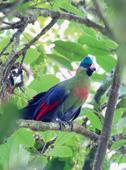
Globally, many don’t realize Uganda is home to these legendary ‘Mountains of the Moon’ so there’s huge untapped potential. By telling their story alongside our gorillas, safaris, and heritage, we can attract adventure travellers and position Uganda as a world-class destination.
Q: What message do you hope your memoir sends to African women aspiring to take on similar challenges?
I want women to know that no dream is too bold and no challenge beyond their reach. The Rwenzoris taught me that strength isn’t about fearlessness but about moving forward despite fear and doubt. Our stories and voices matter. By stepping into spaces where we’ve been under-represented, we break barriers and open paths for others. If my journey inspires even one woman to take her first step toward her own mountain, then it has been worth it.
Precision Air connects to Entebbe, Uganda, with direct flights from its hub in Dar es Salaam. The Rwenzori mountains can then be reached by car via Kampala or a scheduled flight can be arranged from Entebbe International Airport to Kasese Airstrip, which is then followed by a 40 minute-drive to the Rwenzoris.

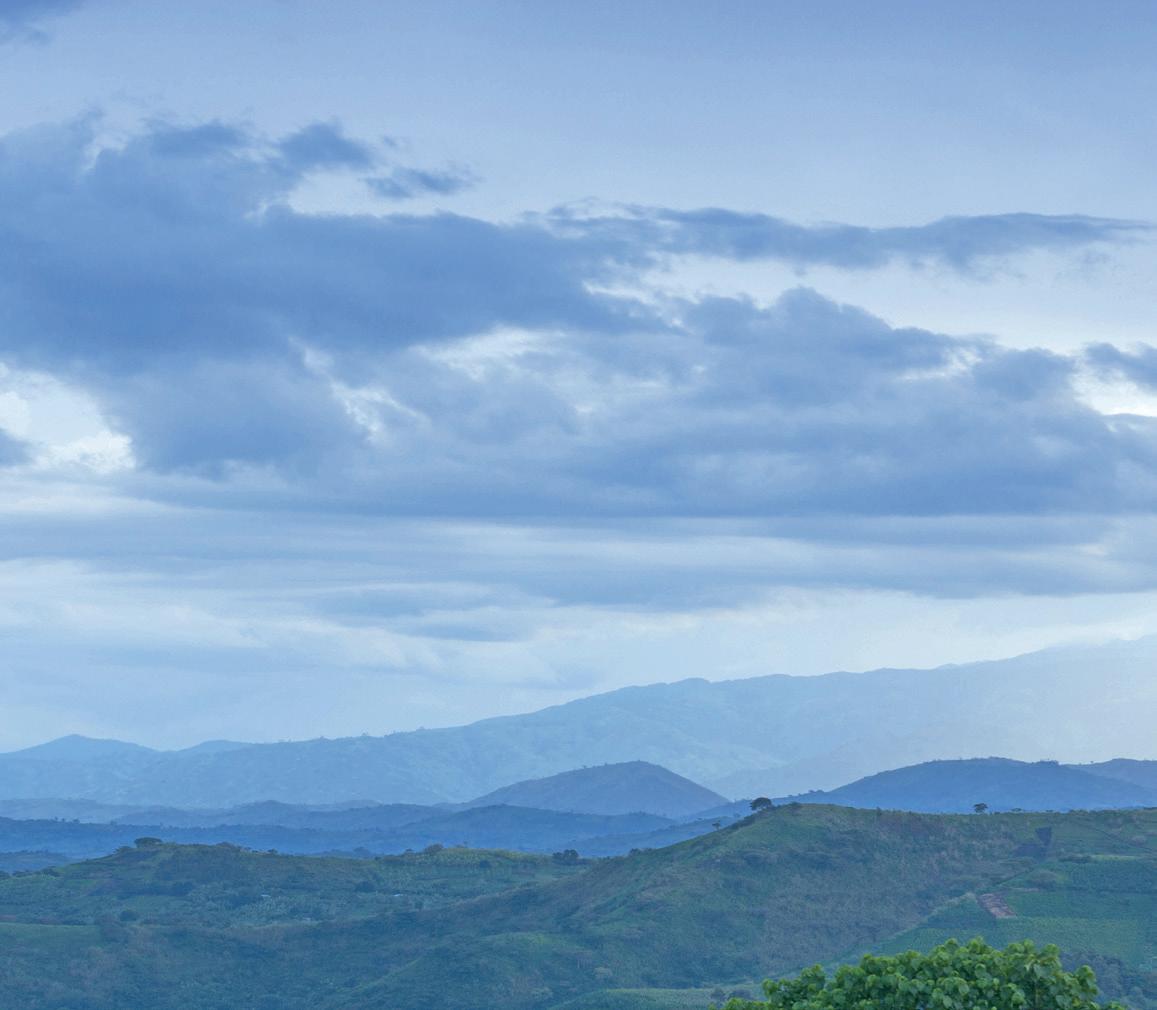
now is the best time to
September and October are the peak times to the breathtaking spectacle of thousands of wildebeest and zebra making their dramatic crossings of the crocodile-filled Mara River – a true wildlife extravaganza.
With the Great Migration reaching its dramatic peak and predators on the prowl, September to November is when the Masai Mara really roars.

2 Prime predator action
With herds of herbivores everywhere, lions, cheetahs, and leopards are on the hunt. Visitors a front-row ticket to nature’s own action movie.
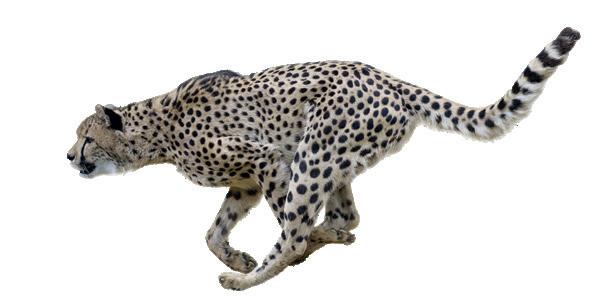
The grass is shorter after the dry season, so you’ll have excellent visibility to spot all the animals, big and small.
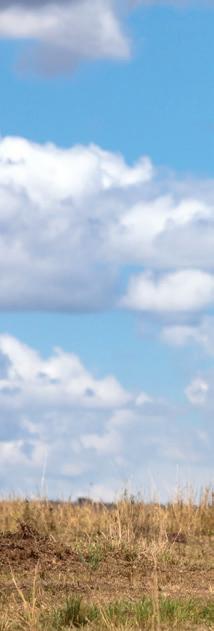
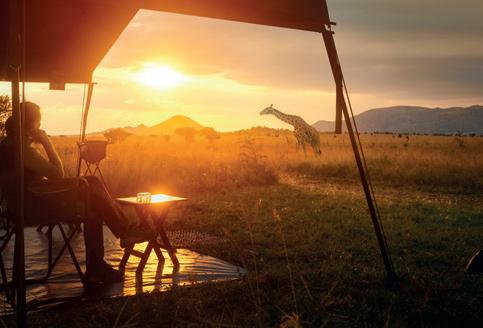
The skies are usually clear, the days are warm (but not too hot), and the evenings are just cool enough for cosy campfire stories under the stars.




September and October are wonderful months to meet local Maasai communities and learn about their traditions and daily life.
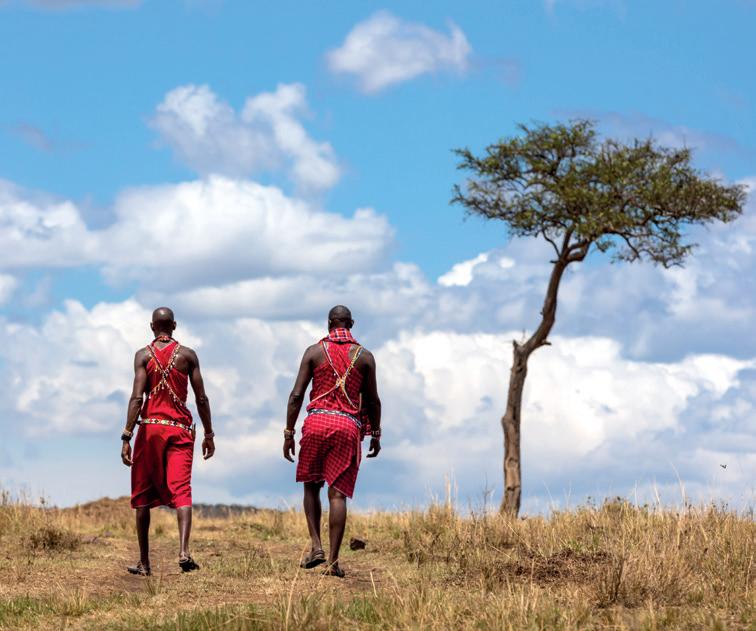

8
The golden light of the Mara in these months makes for stunning photos – think glowing sunsets and dramatic wildlife shots.
With less rain and cooler nights, there are fewer mosquitoes around, so you can focus on the adventure instead of the insect repellent.

Migratory birds begin to arrive, adding a splash of colour and song to the Mara’s already vibrant landscape.

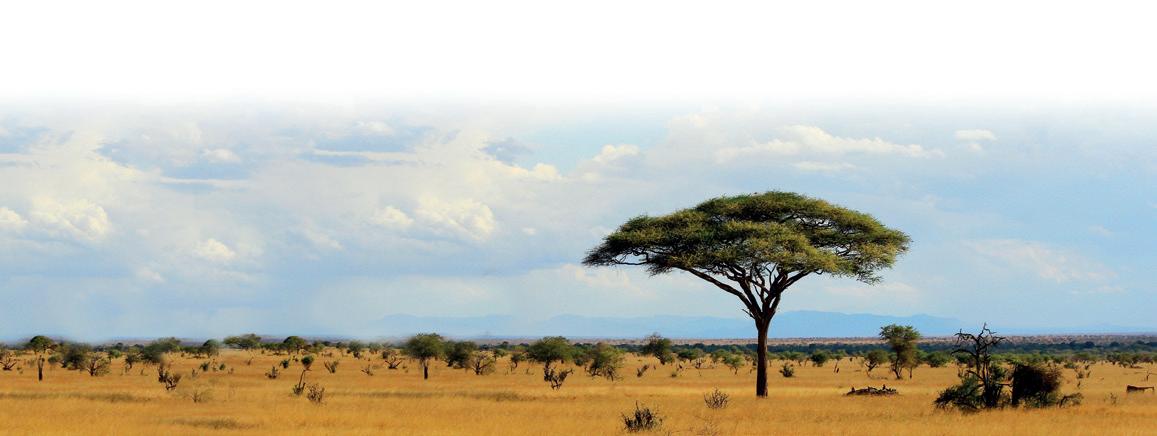
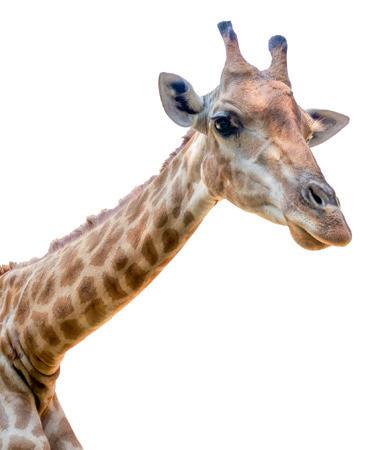
The peak crowds of July and August have thinned out, giving you a more relaxed and intimate safari experience.
The Mara feels festive and alive, with animal families thriving and the landscape buzzing with activity. You’ll feel the magic in the air.
From sunglasses that play music and take photos to the ultimate noise-cancelling headphones, here’s our pick of the gadgets that will ensure a fun flight.

If you want your premium headphones to transform the inflight movie into a home cinema experience, you’ll need this cool Bluetooth transmitter. The AirFly Pro will plug into the headphone jack within your seat area, enabling it to link to your own headphones for pristine audio in minutes. Travelling with a friend? The AirFly Pro can connect to two pairs of Bluetooth headphones so you can enjoy the film together. With a 20-plus-hour battery life, it will keep you entertained throughout your flight.
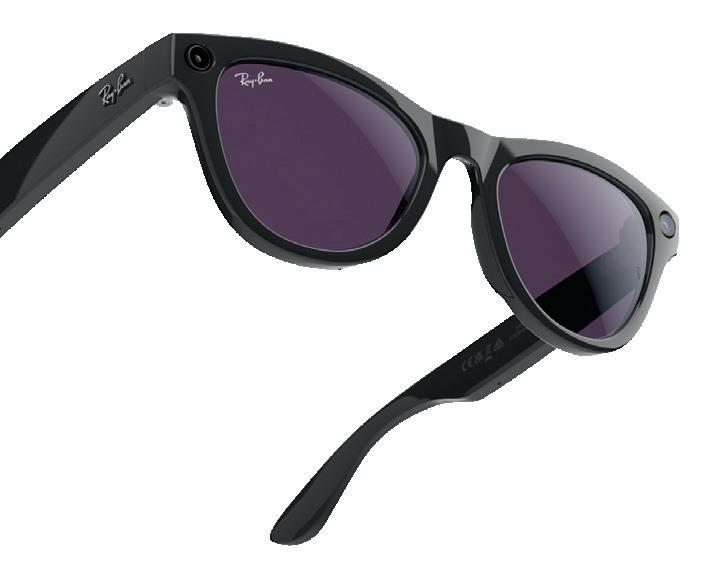
Price: US$74 at twelvesouth.co.uk
If you’re heading to the Tanzanian sunshine, you’ll need a pair of good sunglasses. Meta sunglasses add some AI along with the usual UV protection. The frames – available in a host of classic Ray-Ban styles – have a built-in 12-megapixel camera. Simply tap the temple of your glasses to take photos or shoot videos. The glasses also have mini-speakers so you can listen to your favourite track on the move or take calls. Other smart features travellers will appreciate include an integrated real-timer translator that repeats the user’s speech into a chosen language.
Price: From US$399 at www.meta.com



Don’t be that person who holds their phone up at eye-level for an entire two-hour flight to watch a movie. Your arms will thank you if you invest in this phone holder. Its adjustable clip means it can be mounted on the tray table attached to the the seat in front of you. The device features adjustable joints and a 360° rotation design so it can be easily positioned at the ideal viewing angle. Foldable and compact, the holder will fit easily in your hand luggage. When your travels are over, it can double up as a desk stand for your phone.
Price: US$13 at amazon.com


The world-class active noise cancelling of the Sonos Ace is ideal if you want to focus on work or just zone out during your flight. The headphones effectively suppress low-frequency rumbles such as engine noise, and also do a good job of reducing higher tones such as passenger chatter. The sound quality is excellent, the fit is comfortable, even during extended use, and you can get up to 30 hours of battery life. All in all, a solid choice for frequent flyers.
Price: US$599 at sonos.com
Lost luggage is the travel nightmare we all fear. If you’ve ever been the last one standing at the baggage reclaim belt, you’ll know the feeling of despair that follows. Apple’s AirTag can’t bring your bag any sooner, but you will at least know where it is and be able to trace its return. With the tag in your bag, you can use the Find My app on your iPhone to locate it. Once you are reunited with your luggage, you can pop the AirTag in your backpack or beach bag to keep them on your radar
Price: From US$50 at apple.com


Test your brain power with our fun puzzles and games!
3D view
Which one of the five ‘top-down’ views matches the 3D blocks?



Jal Patel reveals where to seek out the spooky stories of Stone Town and Zanzibar.

With its rich yet troubled past, Zanzibar is fertile ground for unquiet spirits. Locals hand down tales of strange hauntings, happenings, and apparitions in the ancient buildings and narrow streets of the islands’ historic centre, Stone Town. Many Zanzibar elders still advise, “Usipite hapo usiku, roho bado zipo” (Don’t pass there at night, the spirits are still there).
Zanzibar is known for ghost stories handed down through the centuries. These tales live on amid the ruins, remnants of its troubled past. There are plenty of supposedly haunted places to visit or even stay the night for a potentially thrilling or terrifying experience.
Those with a penchant for the paranormal can sign up for a Zanzibar Ghost Tour. These typically start when Stone Town is shrouded in darkness and led by a lantern-holding guide who reveals a series of haunting hot spots. Some are entertaining while others are truly spine-chilling. Here are some supernatural standouts to look out for.
A woman in flowing black clothes has been spotted in several locations such as Mnazi Mmoja Hospital, Victoria Gardens, and the High Court. This Lady in Black is said to run away when people recite verses from the Qu’ran.

This palace was once the home of the last king of the Shirazi – a group of Persian-speaking merchants who migrated to East Africa. He died in 1865 and was soon followed to the grace by his son. With the bloodline gone the palace was left to crumble. Excavations carried out between 1910 and 1914 revealed human skeletons and a set of carved wooden ceremonial drums within the ruins. Recently much of the old walls have been restored and it is now a tourist site. Some visitors have reported seeing apparitions that stand at the end of the room, and guests would be paralyzed with fear.
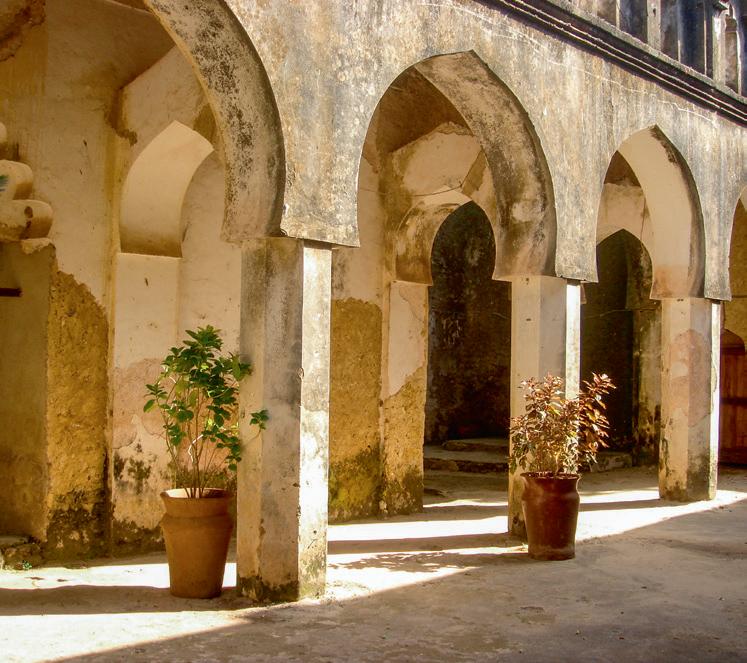
Just 8 km from Stone Town is a site that holds the remnants of the St. Mary’s School for Freed Slave Girls. It is believed to be haunted by the ghost of the school’s headmistress, Caroline Thackeray, who lived in Zanzibar for 49 years and died in 1926. Caroline is said to still wander the site.
Locals whisper that this landmark building – it was the first of its kind on the islands to have electricity and an elevator – is haunted by Swahili slaves and royals. Locals and tourists alike have witnessed eerie activities, from flickering lights (even during
blackouts, which are common in Tanzania), to apparitions going up the stairs but disappearing when reaching the top.
It may not come as much of a surprise that ghostly activity has been recorded in a place so emotionally charged with its tragic past. It is said to be one of the most haunted places in Zanzibar. What was once one of the world’s last open slave markets now houses the Christ Church Cathedral. Many visitors to the church have reported experiencing sudden chills, whispers, the sound of chains clinking, and a sudden sadness that makes them rush out of the building.

It is said that the spirit of the infamous Zanzibari slave trader and ivory merchant Tippu Tip still wanders his one-time residence. The building in Stone Town’s Shangani neighbourhood was once a symbol of power, wealth, and cruelty. After the revolution it was turned into a block of flats. Locals say that a tall man in a flowing Arab robe can sometimes be seen from one of its windows staring silently out to sea. People have heard shouting, chains dragging, and doors banging. Even night guards refuse to stay there at night such is its haunted heritage.
Between the House of Wonders and the ocean you’ll find these tree-lined gardens. Quiet during the day, locals have claimed to see shadowy figures dart between the trees after dark, even under the streetlights. There is also a bench that is supposed to be cursed. Anyone who sits on it is said to be consumed by an intense sadness or to feel that there is a ghostly presence sitting next to them. The gardens are now the setting for the famous Forodhani street food market each evening.
Zanzibar Ghost Tours starts at 8pm and end at around 11pm. Tours include pick-up and drop-off service from Stone Town hotels. Only English-speaking guides are available. For more information or to request a booking, visit amozanzibartours.com

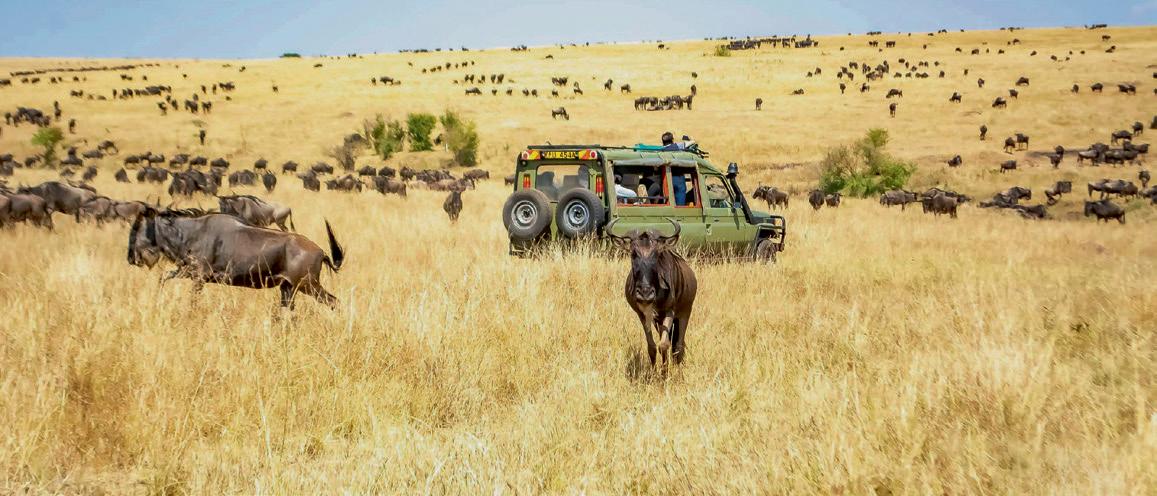
If there is one destination that I enjoy travelling to it is the Mara. Over the years, I have returned to this place many times – sometimes for work, sometimes for solace, always for wonder. I particularly love being there during the Great Migration. Watching the millions of wildebeest surge forward in endless columns, despite the predators that lie in wait, is to witness raw survival on an epic scale. Sadly, it is humans who are now becoming one of the greatest threats to this age-old journey.
In recent years, the Mara has been plagued by instances of unethical tourist behavior. Vehicles crowd too close to river crossings, blocking natural pathways and boxing in herds of wildebeest. Tourists, eager for the perfect photograph, lean out of windows or climb onto car roofs, shouting, clapping, or even accelerating engines to stir animals into action. Some guides, under pressure to deliver the “wow moment” break park rules by driving off designated tracks, chasing animals for better angles. These disturbances are not isolated incidents. Every migration season, photos and videos circulate on social media
showing long lines of safari vehicles jostling dangerously close to the action, sometimes ten or 15 cars deep, hemming animals in. Recent clips showed tourists getting out of their safari vehicles to chase alarmed wildebeest. What should be a serene, reverent encounter with nature has too often turned into a chaotic circus. Park authorities together with tourism organisations have issued warnings and recommendations while expressing their strong condemnations of such behavior.
What people forget is that the Great Migration is not just a tourist attraction, it’s also a finely balanced ecological phenomenon that sustains the Mara’s entire ecosystem. Human interference could be the tipping point that causes herds to abandon traditional routes, skipping vital grazing grounds in the Mara altogether. Should that happen, the reserve would lose not only its ecological heartbeat but also its global appeal.
As someone who has watched the Mara evolve over decades and written all about it, I find these exposés deeply painful. I believe that the solution lies
Paa columnist Harriet James is a Nairobi-based travel journalist who loves to promote African destinations, meet new people and inspire change and positivity wherever she goes. Follow her on Instagram and LinkedIn @HarrietOwalla.
partly with authorities and partly with us, the tourists. The Mara reserve and conservancies must enforce stricter penalties for rule-breakers, limit vehicle numbers at crossings, and invest in ranger patrols to ensure compliance. Tour operators must train guides not just as drivers but as conservation stewards. But as travellers, we too bear responsibility. For instance, we must never pressure guides to get closer than regulations allow. Use binoculars or cameras with zoom lenses instead. We should also ensure that the tour guides stay on the designated roads. Off-roading damages habitats and stresses animals. If your guide veers off, speak up. Third, you should watch the wildlife in silence, keep your voices low and never attempt to draw the animal’s attention in unethical ways. Being that we have the power to choose who to spend cash on, I would advise that as a traveller, you should choose tour companies that value conservation over sensationalism and openly commit to responsible practices

Precision Air is always looking to give its customers an exclusive and memorable service experience; and the Paa Royal benefits programme is part of that mission. The membership categories* are as follows:

Upon enrolment, members will be given their unique Paa Royal number, which they must always show whenever they buy tickets as well as during check-in at the airport. After flying three times or more, members will be given a Jade membership card. With the card, they will be recognised as members of the Paa Royal Programme.
Other benefits of Jade membership:
• Priority membership baggage tags to ensure tagged bags will be handled with special care and delivered first on the conveyor belt at the passenger’s arrival destination
• An opportunity to get a free ticket within the Precision Air’s network after accumulating enough points in their account.
*Please note that, in each membership category, if a member is unable to maintain the required number of flights in a year, he or she will be downgraded to their tier level achieved in that current year.

After attaining Silver membership level, the member will be issued with a Silver membership card which he (or she) must show at all Precision Air point of sales in order to receive the recognition that he deserves. Should a member book online by logging into Paa Royal Pages, he will automatically receive points earned to his account. Members will be entitled to special treatment and priority treatment whenever they travel.
Other benefits of Silver membership:
• Free 5 kg baggage every time member travels on a PW operated flight
• Priority membership baggage tags to ensure tagged bags will be handled with special care and delivered first on the conveyor belt at member’s arrival destination
• Opportunity to obtain a free ticket within the Precision Air network after accumulating enough points in your account
• Priority telephone reservation in those times when you want to make your reservation and cannot visit our office or travel agent. Booking is a call away through our Paa Royal helpdesk line.

After attaining the Gold membership, members will begin to experience royal and exclusive treatment whenever they fly. Members will be opened up to a new world of opportunities and experiences and, of course, receive more rewards. Should a member book online by logging into Paa Royal Pages, he (or she) would automatically receive points earned to his account.
Other benefits of Gold:
• Free 10 kg baggage every time member travels on a PW operated flight
• Priority membership baggage tags to ensure tagged bags will be handled with special care and delivered first on the conveyor belt at member’s arrival destination
• Opportunity to obtain a free ticket within the Precision Air network after accumulating enough points in your account
• Priority telephone reservation at times when you want to make your reservation and cannot visit our office or travel agent. Booking is a call away through our Paa Royal helpdesk line
• Priority waitlist/airport standby each time you want to travel and your selected flight is full.

When members reach Tanzanite member they attain ultimate royalty. We will always strive to give these royal members an exclusive and memorable flight experience. At this level, members will already be used to royal treatment; royalty will be their way of life.
Other benefits of Tanzanite:
• Free 15 kg excess baggage every time the member travels on a PW-operated flight
• Opportunity to obtain a free ticket within the Precision Air network after accumulating enough points in your account
• Confirmation on any flight if a member is prepared to pay Y class fare, regardless of the flight booking status
• Priority waitlist/airport standby whenever you want to travel and your selected flight is full
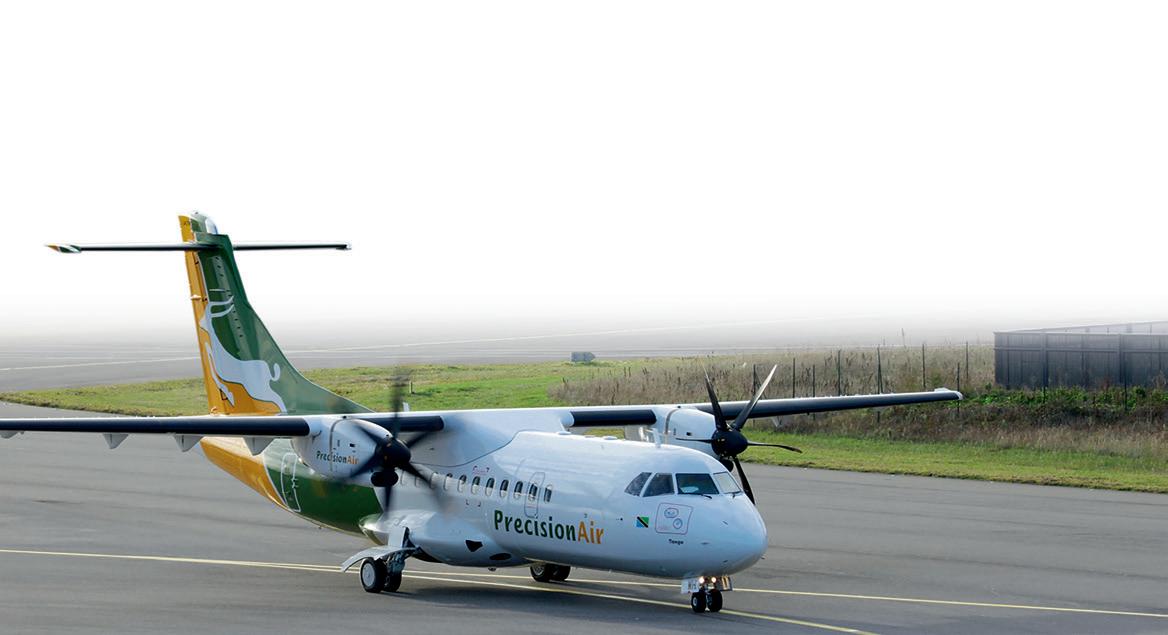
• Priority telephone reservation at times when you want to make your reservation and cannot visit our office or travel agent. Booking is a call away through our Paa Royal helpdesk line.
• Priority membership baggage tags to ensure tagged bags will be handled with special care and delivered first on the conveyor belt at member’s destination.
• Silver, Gold and Tanzanite members also get discounts of up to 20 per cent when visiting GSM shopping malls Msasani and Pugu, Southern Sun Hotel, Akemi restaurant, East Point Restaurant and the Colosseum hotel and sports club - all in Dar es Salaam.
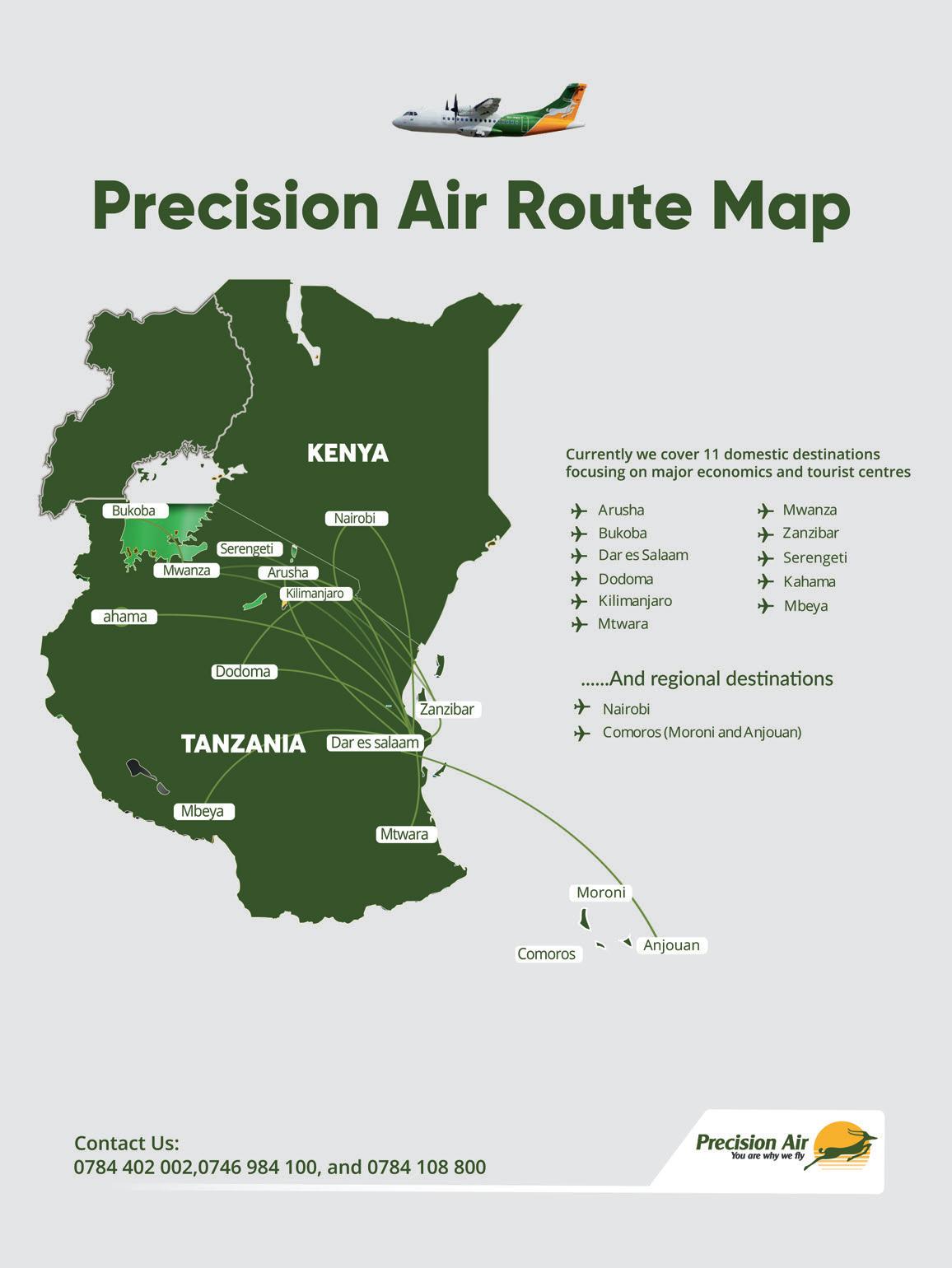
Dar es Salaam Head Office
Diamond Plaza, 1st Floor, Plot no 162 / 38, Mirambo Street/ Samora Ave, Dar es Salaam
Tel: +255 (0)22 219 1000
Contact Centre:
+255 (0)787 888 409/408/417
Email: pwreservations@precisionairtz.com
Dar es Salaam Sales Office
NIC HDQ BUILDING, Samora Ave/Pamba Road
PO Box 70770, Dar es Salaam
Tel: +255 (0)22 213 0800 / 212 1718
Fax: +255 (0)22 211 3036
Email: salesdar@precisionairtz.com
E-COMMERCE
(For users of VISA and MasterCard)
Diamond Plaza, 1st Floor Plot no 162/38
Mirambo Street/Samora Ave
Dar es Salaam
Tel: +255 (0)686 177 458/ (0)689 669 446
Fax: +255 (0)22 211 3036
Email: pwreservations@precisionairtz.com
ARUSHA
Ngorongoro Tourism Center
First Floor
Goliondoi & Makongoro Road
PO Box 1636, Arusha
Tel: +255 27 254 5489 / 254 5503
Email: pw-arksales@precisionairtz.com
BUKOBA
Bukoba Office-GSA, Bukoba Machinery, Bukoba Centre
Kawawa Road, Bukoba
Tel: +255 (0) 28 222 0545/222 0204
Mob: +255 (0) 713 316 806/ (0) 787 616 806
Email: bukobamachinery55@yahoo.com
DODOMA
Mtendeni street, Dodoma
Tel: +255 787 845 200 / 754 972 173
MOSHI
KNCU Building, Ground Floor
Old Moshi Road, Moshi
Tel: +255 784 686 418
+255 (0)272 753 495/753 498
Mob: +255 (0)787 800 820
Email: sales@acobtravel.com info@acobtravel.com
MTWARA
Tanu Road, Posta Building
PO Box 1066, Mtwara
Tel: +255 (0)23 233 4116
Mob: +255 (0)787 818 442/ 767 818 442
Email: pw-mwzgsa@precisionairtz.com
Along Kenyatta Road, Plot no 002, Mwanza
Tel: +255 (0)28 250 0819/250 0204
Fax/Tel: +255 (0)28 250 1054
Mob: +255 (0)784 402042
Sales Office Mobile: +255 (0)784 968427
ZANZIBAR
Zanzibar Airport
Tel: +255 (0)24 223 4521
Fax: +255 (0)24 223 4520
Email: pwznz@precisionairtz.com
NAIROBI
Barclays Plaza, 7th Floor, Loita Street
PO Box 50990-00100, Nairobi
Tel: +254 (0)20 327 4282 / 4290 / 4297
Mob: +254 (0)724 76 0736 / +254 (0)736 046 595
Airport: +254 (0) 733 934 795 / 731 530 000
Email: pw-nbo@kenya-airways.com
AVIAREPS
Terminal A Tambo International, Johannesburg
Tel: +27 11 783 1181
Email: jnbres.precision@aviareps.com
Pan Africa House
Plot no.3 Kimathi Avenue
PO Box 5619, Kampala
Tel: +256-790 381 431 (24hr Emergency)
Mob: +256 784(704) 329 793
Email: precisionair.eva@utb.co.ug
Argentinierstrasse 2/4
A-1040 Vienna, Austria
Tel: +43 1 585 3630
Fax: +43 1 558 536 3088
Suite 1302, 109 Pitt Street
Sydney, Australia
Email: helpdesk@apg-ga.com.au/ australia@apg-ga.com
Park Hill, J.E Mommaertslaan 18B
1831 Diegem, Belgium
Tel: +32 (0)2 712 0584
Fax: +32 (0)2 725 8392
Mobile: +32 (0)47 770 9971
Precision Air C/o Aviareps
PL 10 00750 Helsinki, Finland
Tel: +46 8 5556 9162
Email: PWres.scan@aviareps.com
Precision Air, 11 rue Auber 75009 Paris, France
Mob: +33 (0)6 21 824 908
Reservation: +33 (0)1 534 35397
Fax: +33 (0)1 5343 7919
MUNICH OFFICE
Josephspitalstrasse 15 80331 Munich
Germany
Tel: +49 (0)895 525 3373
Fax: +49 (0)895 450 6842
FRANKFURT OFFICE
Kaiserstrasse 77
60329 Frankfurt / Main
Germany
Tel: +49 (0)69 770 673 010
Fax: +49 (0)69 770 673 018
7 Stadiou Street, Athens 10562 Greece
Tel: +30 (0)210 9341 500/501
Fax: +30 (0)210 934 1620
Email: PrecisionairSales@tal-aviation.gr
Precision Air GSA APG Ireland
27 Lower Ormond Quay Dublin, Ireland
Reservations: +353 (0)1 804 5100
Email: precisionair@apg-ga.ie
Beechavenue 104 1119 PP Schiphol, Netherlands
Tel: +31 (0)20 520 0280
Fax: +31 (0)2 6 23 0151
Bravo Murillo 101, Planta 6
Oficina 3, 28020 Madrid, Spain
Tel: +34 (0)91 458 5560
Fax: +34 (0)91 344 1726
Email: Precisionair.spain@aviareps.com
Aviareps, Riddargatan 17 11457 Stockholm
Sweden
Tel: +46 (0)8 5556 9162
Email: PWres.scan@aviareps.com
Badenerstrasse 15, 8004 Zurich
Switzerland
Tel: +41 (0)44 286 99 60
Fax: +41 (0)44 286 99 00
Email: precisionair-switzerland@aviareps.com
Discover The World -Turkey
Nef22 E Blok 13. Kat No:194
Atakoy/ İstanbul 34156 TURKEY
Tel: +90 212 806 11 87
Email: info@discover-tk.com/ sales@discover-tk.com
and CANADA
AirlinePros
420 Lexington Ave
Suite 358-360
New York, NY 10170
Tel: +1 877 496 9887
Email: reservations@precisionairlines.us Precisionair_tanzania@airlinerpos.ca
APG Global
Highbridge House, 581 Bath Road Longford, West Drayton
Middlesex, UB7 0EW
Reservations: +44 (0)844 482 2313
Email: precisionair@apg-ga.co.uk
GSA OF ASIA PACIFIC (excluding Japan and China)
Elite Holiday Travel Service
Taipei, Taiwan
FAX: 8
Tel: 886-2-2541 3366
Fax: 886-2-2536 1824
Email: sales@eliteholiday.com.tw
Diamond Plaza, 1st Floor
Plot no 162/38, Mirambo Street
Samora Ave, Dar es Salaam, Tanzania
Tel: +255 784 772 823 / +255 786 447 411
Email: pw-offline@precisionairtz.com
Precision Air takes passenger safety very seriously. Aviation safety isn’t just the pilot’s or the cabin crew’s job – it takes all of us.
It is easy for our natural sense of caution to be dulled in our modern environment, where things don’t go wrong very often. Whether in the air or on the ground, your life and the lives of your family members could some day be saved if you make it a point, in every situation, to create a mental plan of action in case of emergency. Here are some important tips to help you enjoy your travel experience with Precision Air – in flight and around the airport.
A passenger who is allocated an emergency exit seat:
A. Must be both willing and physically able to open the exit doors in an emergency
B. Must completely understand the printed emergency evacuation techniques
C. Must be 16 years old and above.
Although the information seems repetitious, the locations of the closest emergency exits may be different depending on the aircraft that you fly on and the seat you are in.
There are strict rules about what you can bring on board an aircraft. Because:
A. Not all aircraft have space to store your carry-on baggage.
B. In an accident, baggage in the aisles makes it harder to get out of the aircraft quickly.
Carry-on bags must be small enough to fit under the seat in front of you or in the overhead bins. Please confirm with Precision Air rules before your travel to avoid delays.
*Remember: All carry-on baggage must be left behind in an evacuation.
Boarding and leaving an aircraft requires your full attention. As you move to and from the aircraft, you may be in a busy area with many other passengers and cargo, moving vehicles, other aircraft, slippery walkways and/or stairs.
Everyone has the right to safe and secure travel. That is why Precision Air employees and the aviation authority will not tolerate any behaviour that interferes with the flight or puts the safety of passengers and crew at risk.
Seatbelts must be fastened during take-off, landing, during turbulence and any time the crew deem it necessary. Keeping the belt on when you are seated provides that extra protection you might need in case of emergency. If you are responsible for an infant or a child, you must first ensure that your own seatbelt is properly fastened, then secure the child and, if it is an infant, secure the child’s or the infant’s restraints.
Important note: There are a number of events involving air turbulence that highlight the importance of keeping seatbelts fastened throughout the flight.
Though rare, in-flight turbulence is the leading cause of injuries to both passengers and crew.
For the your own safety and the safety of your fellow passengers and crew, we ask you to wear a face mask during the entirety of your flight today. Thank you!
It’s a good idea to keep your seatbelt fastened even when the seatbelt signs are not on.
If you have a medical condition and may need assistance during your travel, kindly ask the Precision Air offices or agents about procedures before your flight. If you are pregnant, you will need to fill a Precision Air medical form, to be signed by your doctor, to confirm that you are OK for travel. For further details, kindly ask while booking your ticket from our sales offices and/or customer services.
Use of portable electronic devices such as mobile phones, laptops, tablets, MP4 players, iPads, etc are not allowed during take-off, landing, taxiing, descent and climb.
Precision Air prohibits the use of some electronic devices during flight because they emit signals that can interfere with the aircraft's instrumentation. Some of the items prohibited include cellphones, radios, remote-controlled games/toys, laser pointers, iPads or tablets that transmits frequencies, portable printers, walkie-talkies, scanners and laptops. These items need to be stowed away for these phases of the flight to avoid injuries in case of an emergency.
